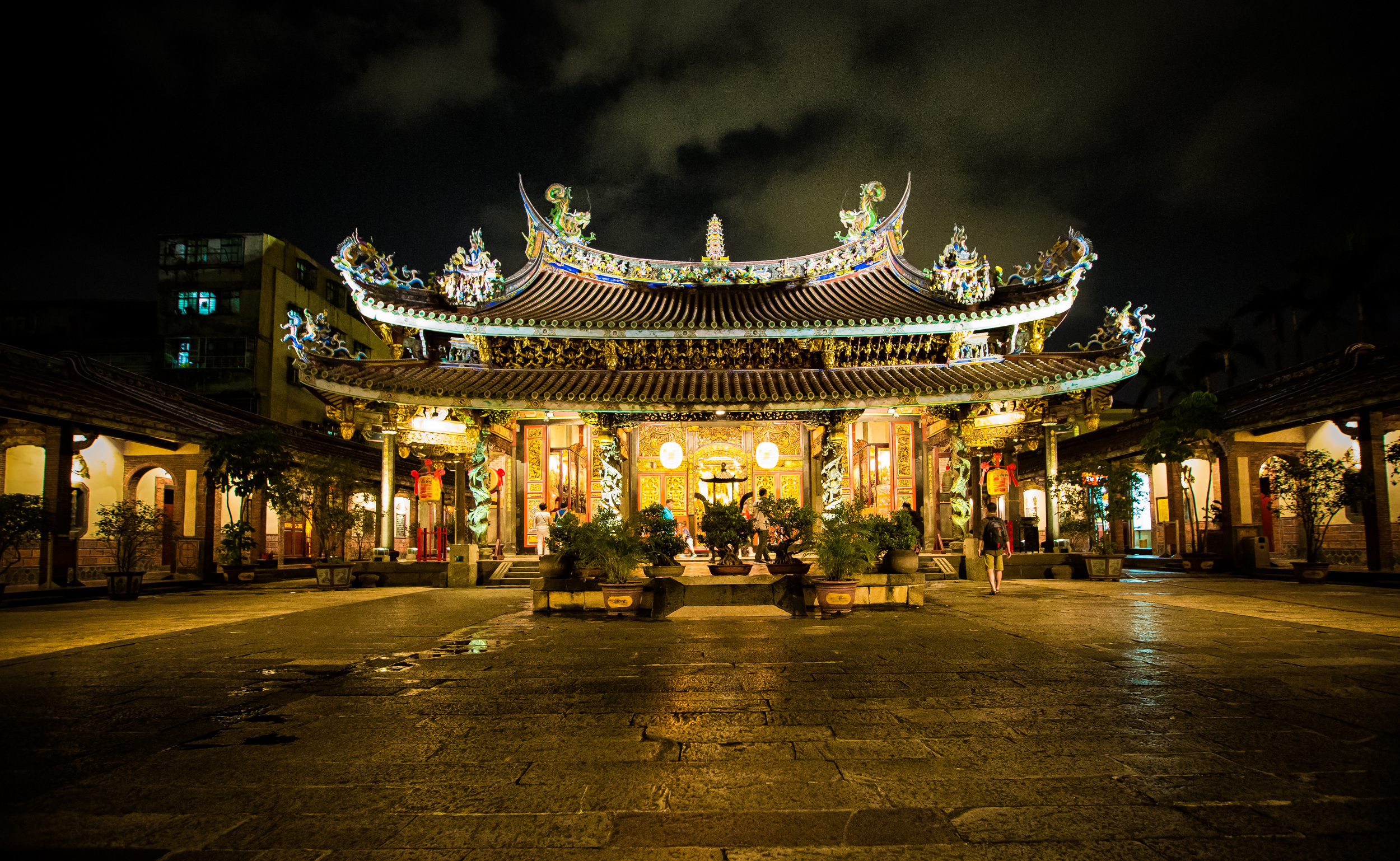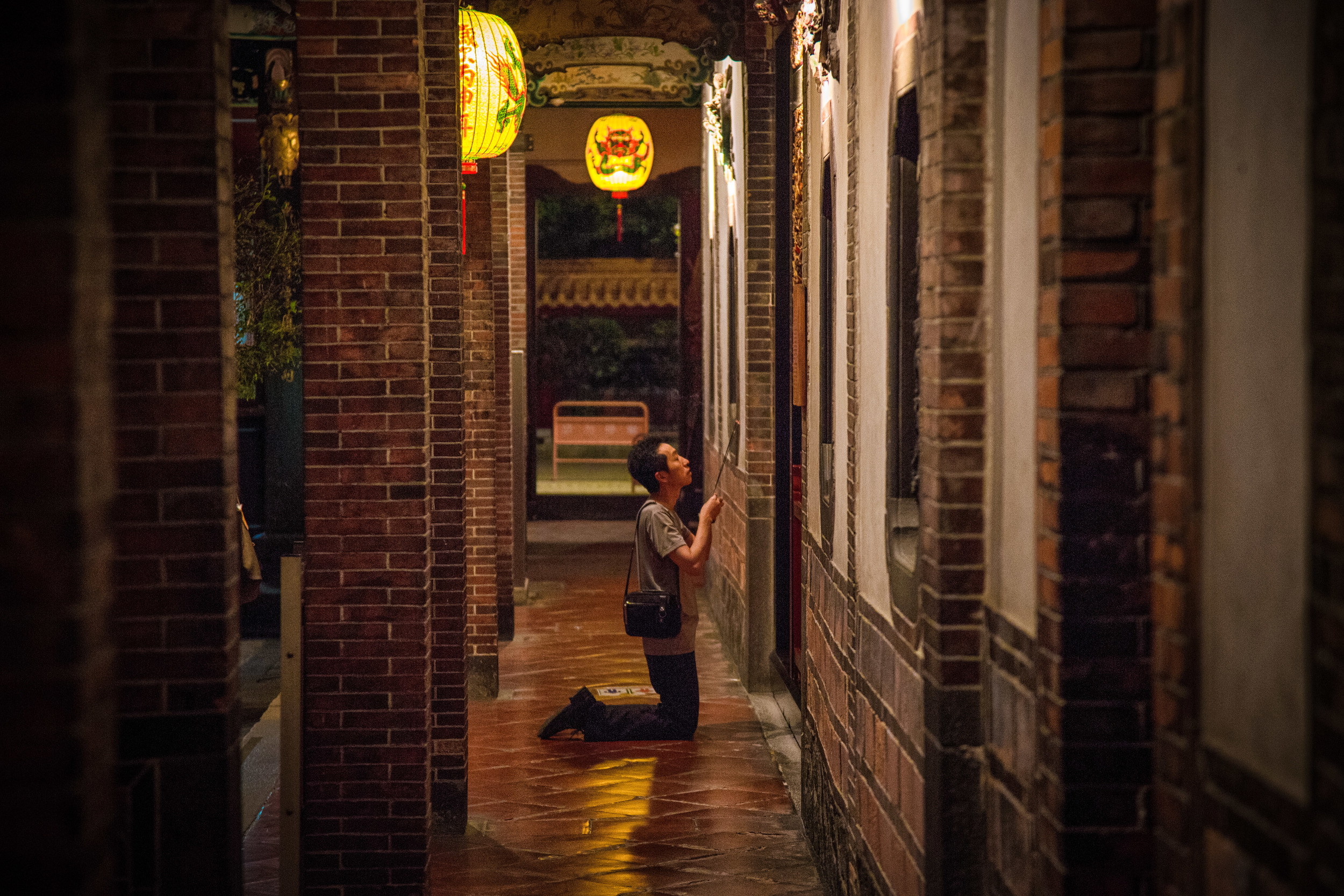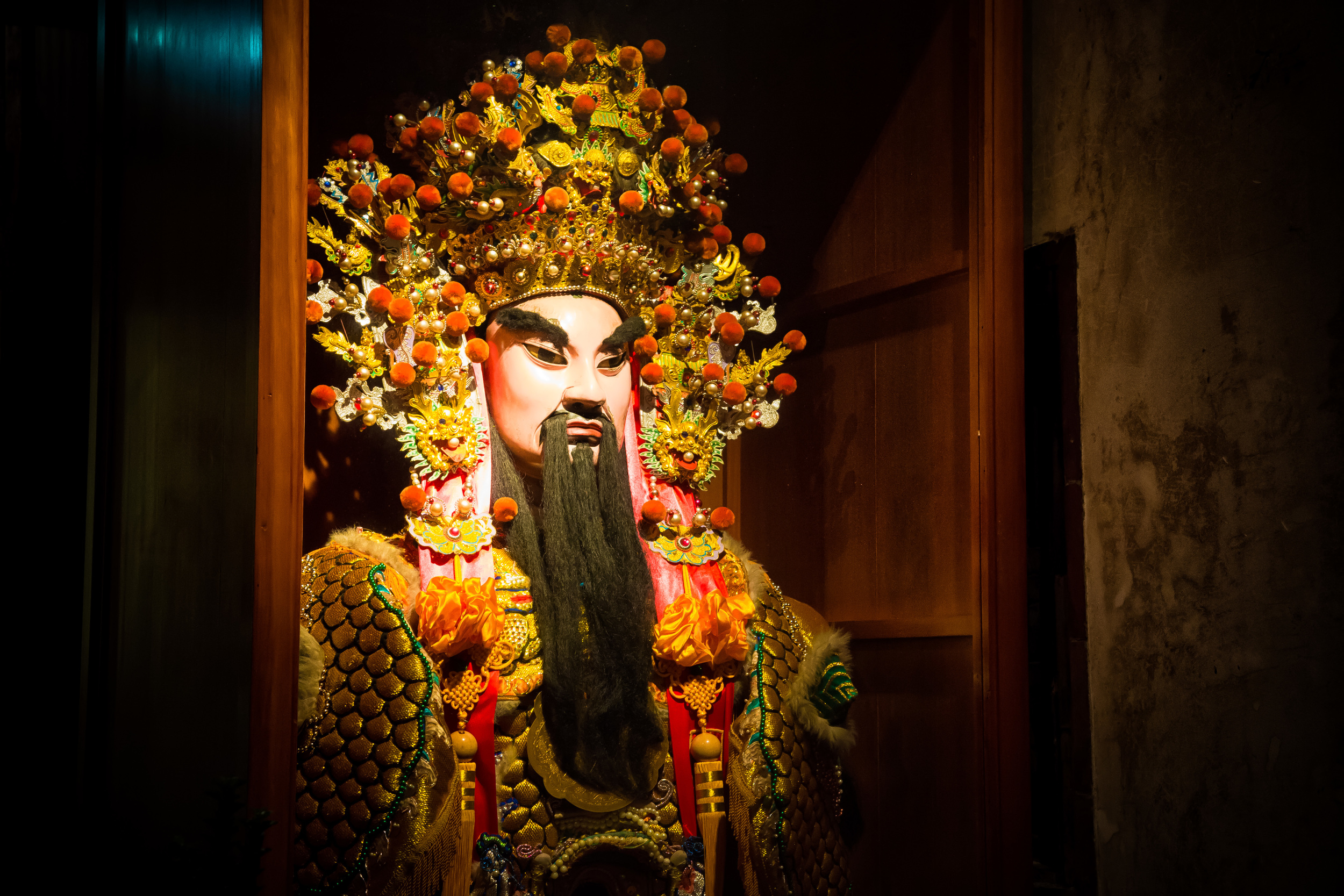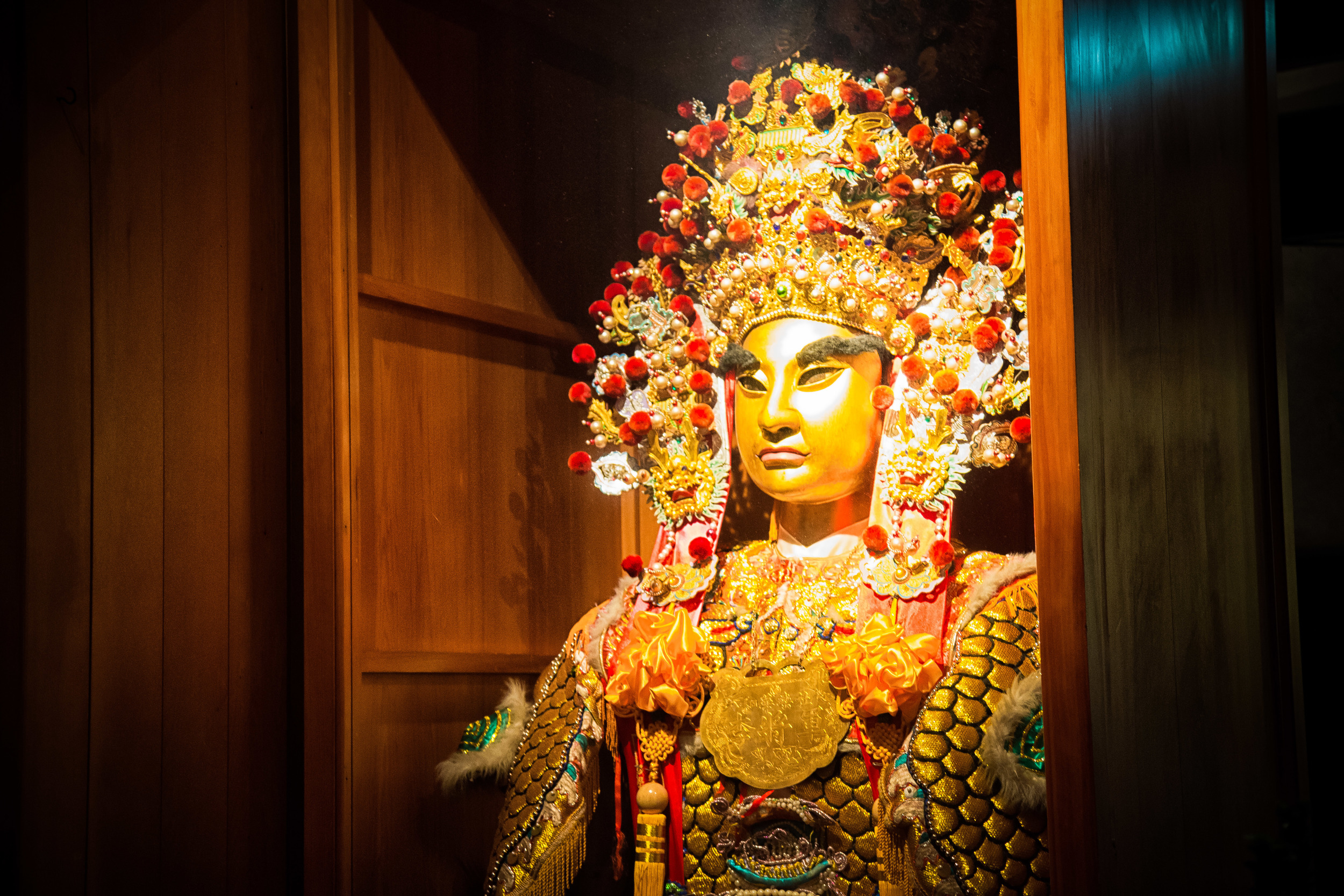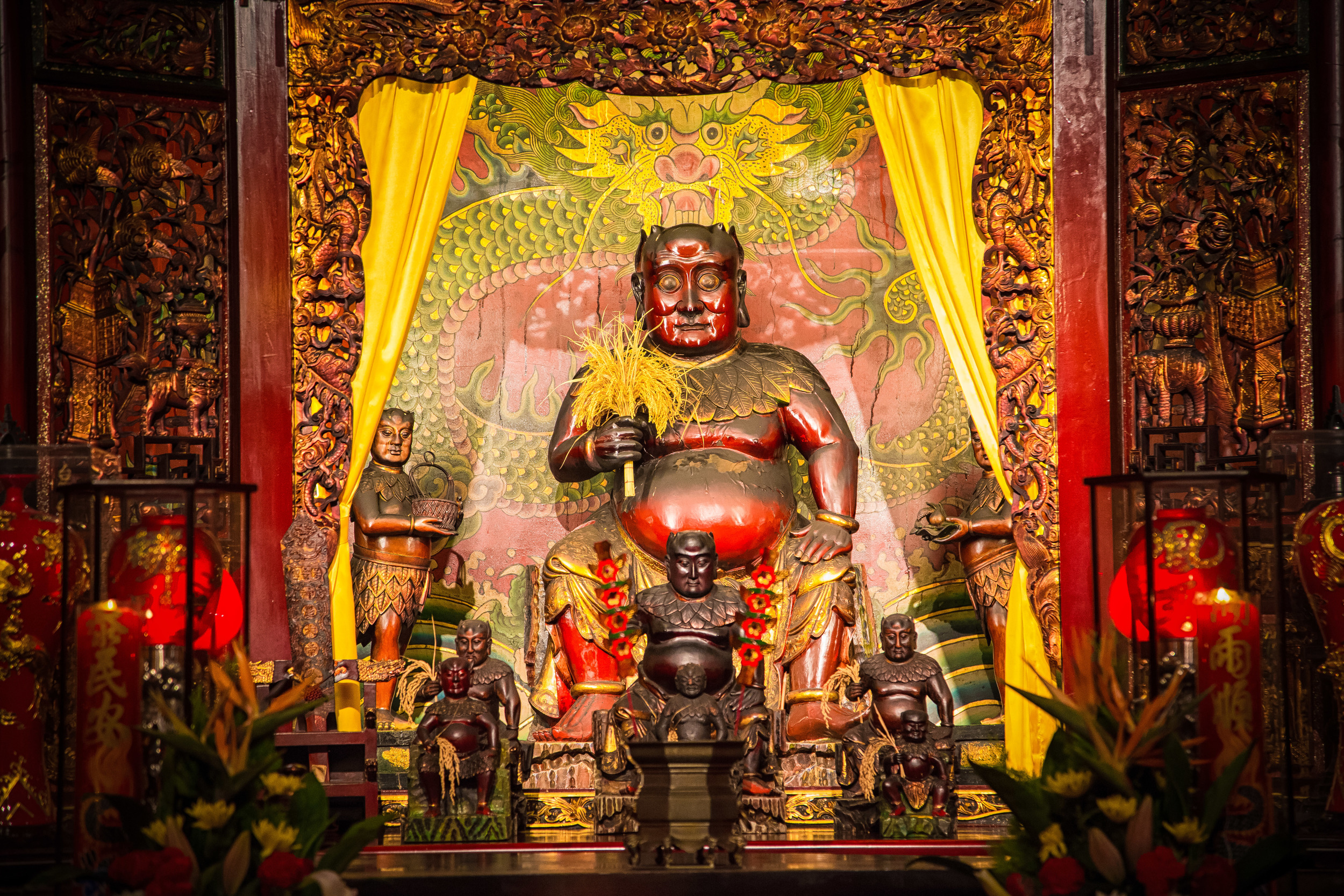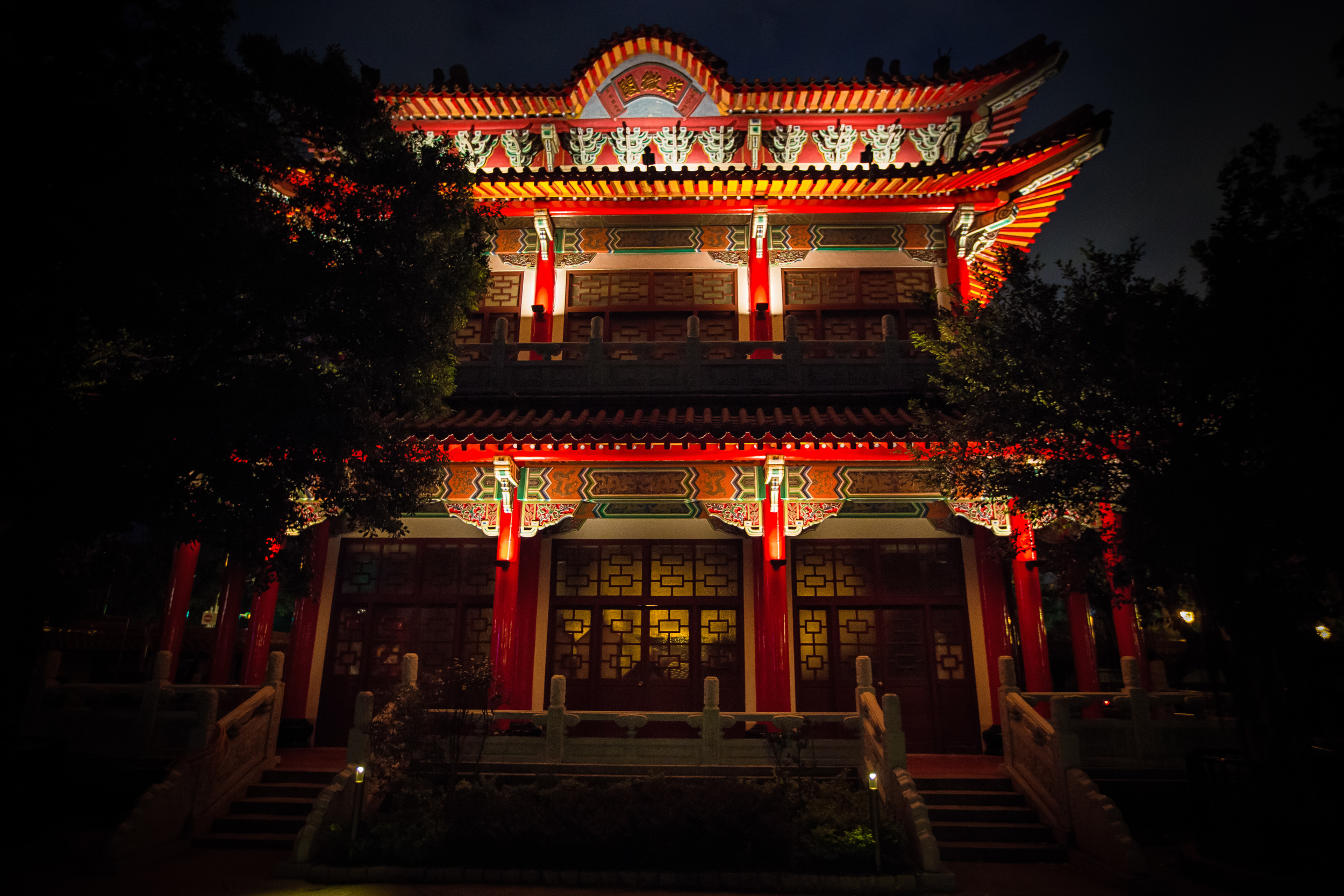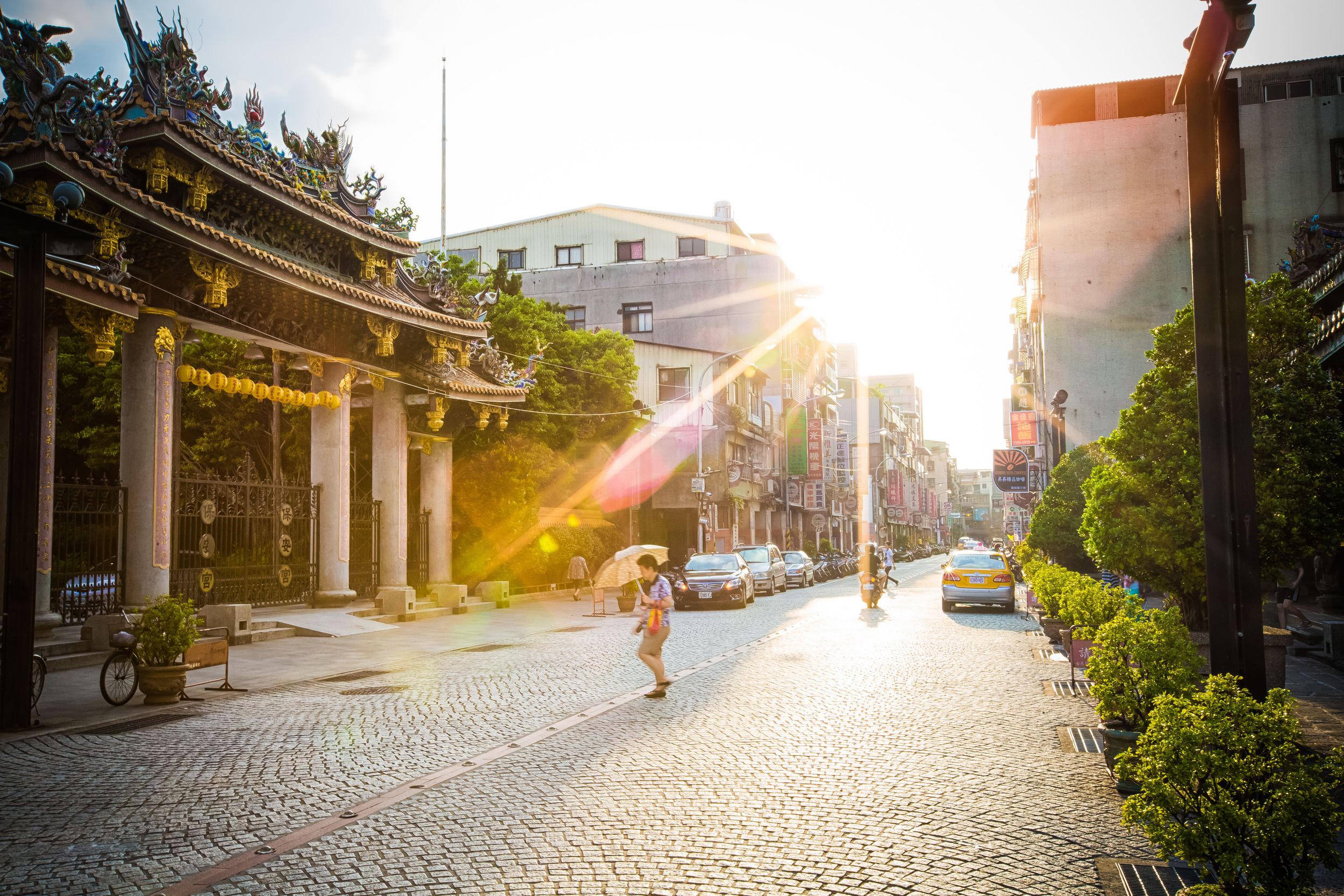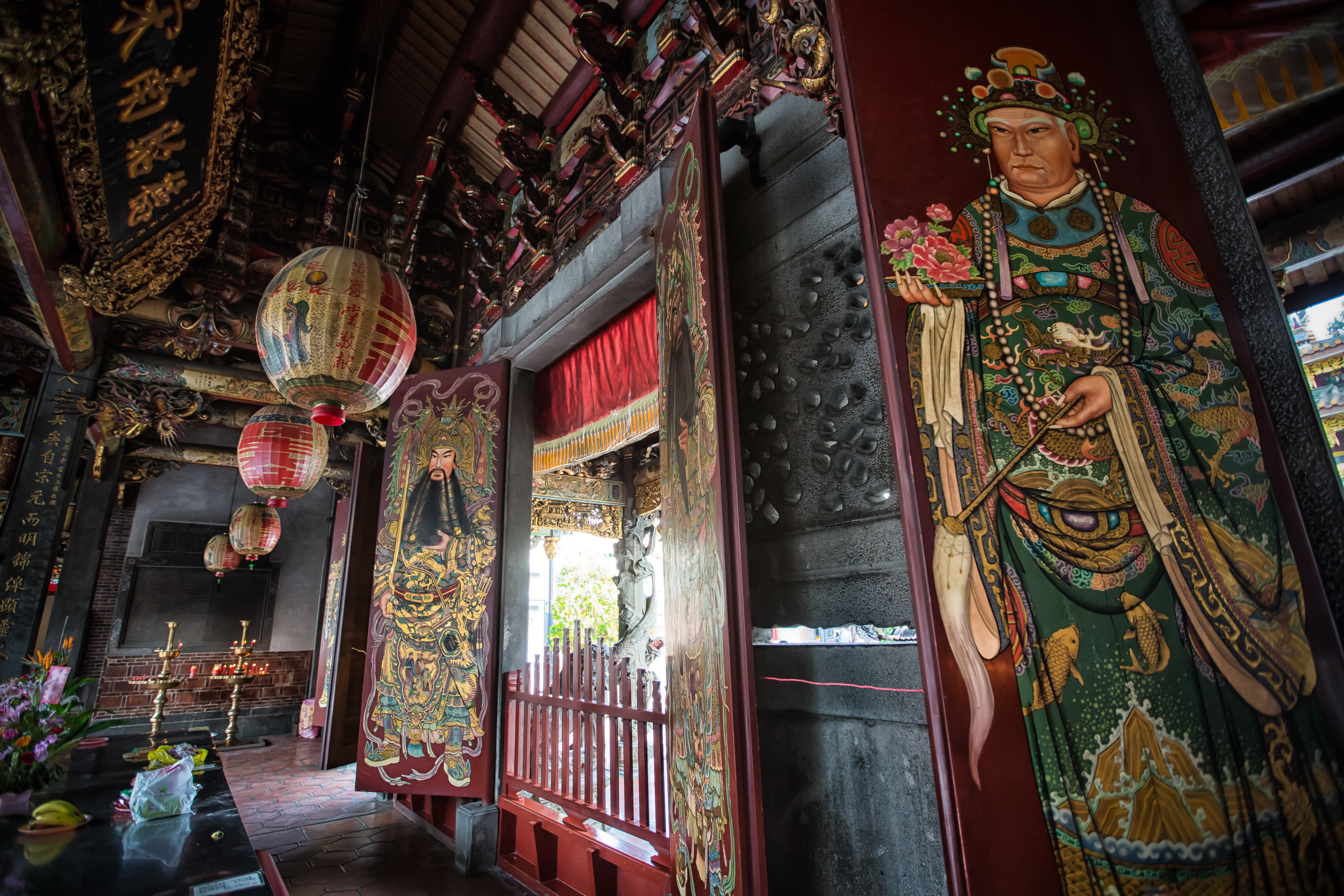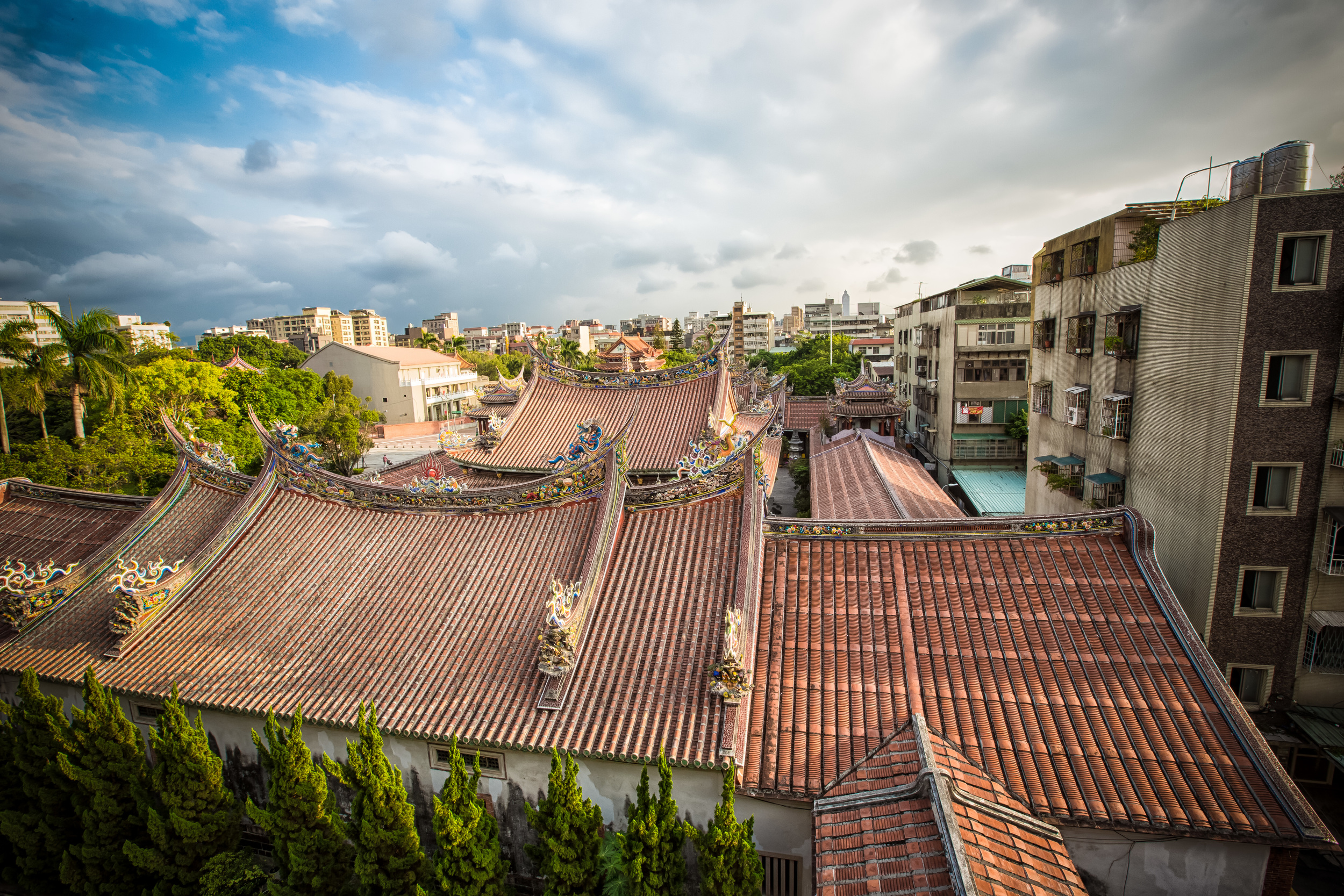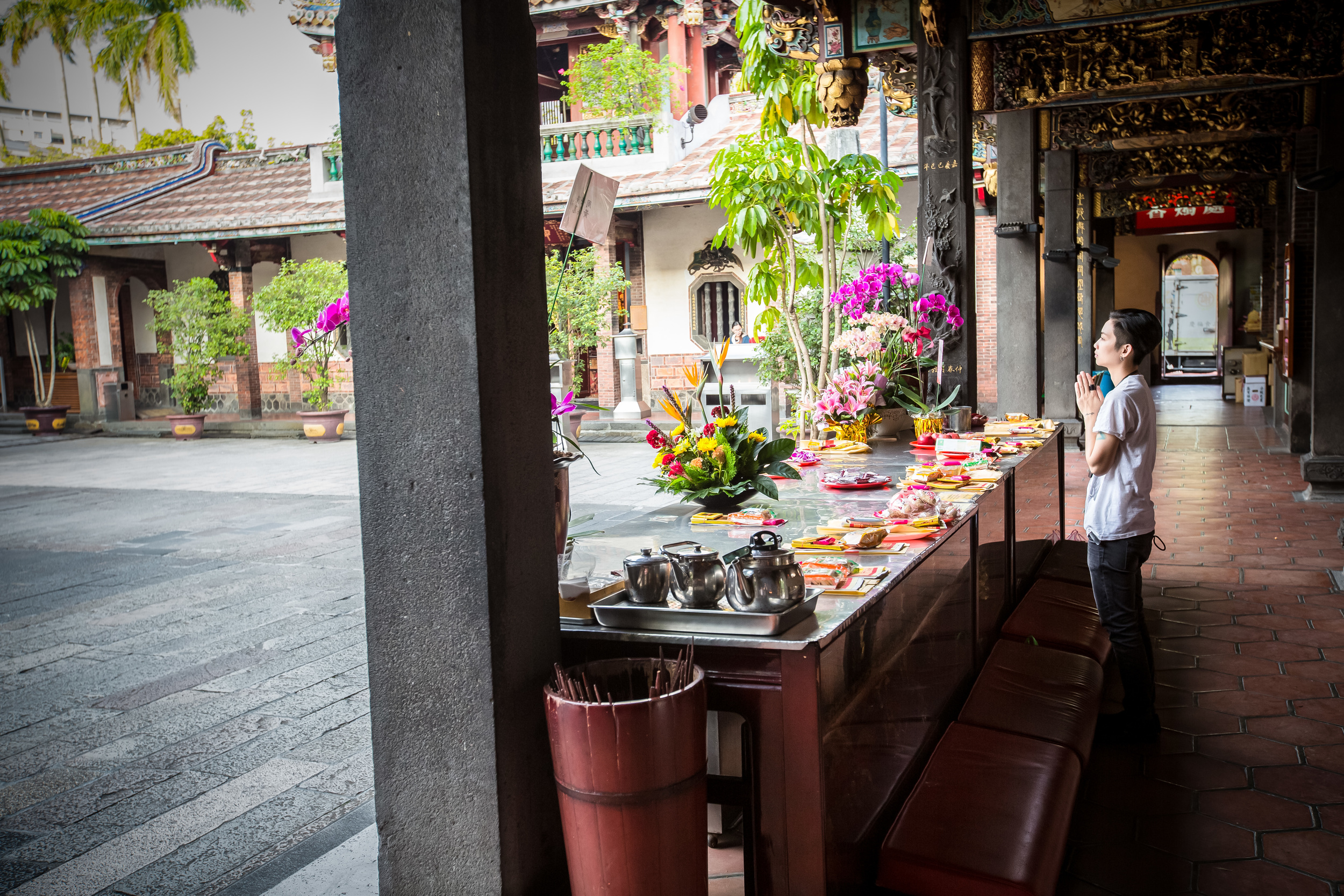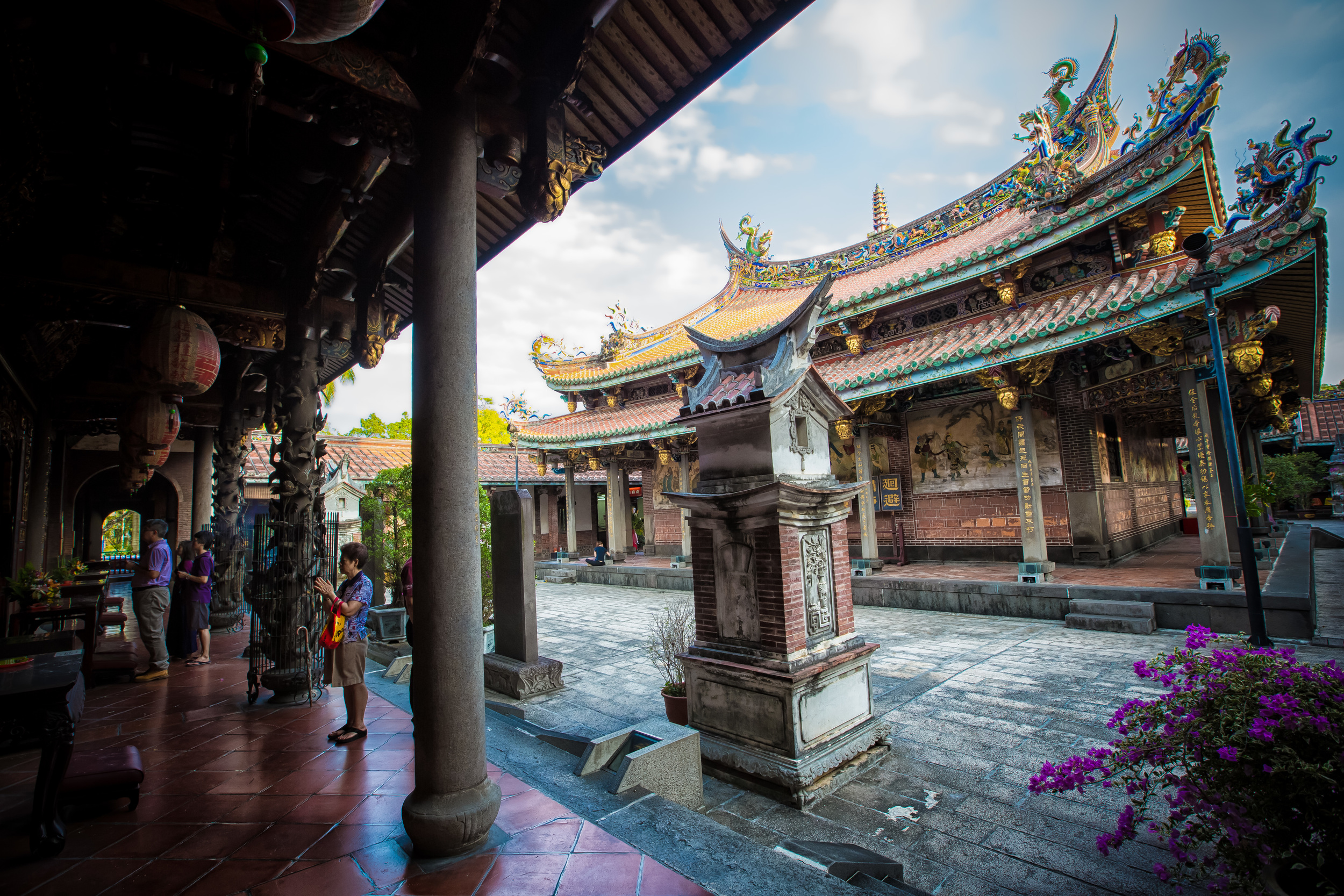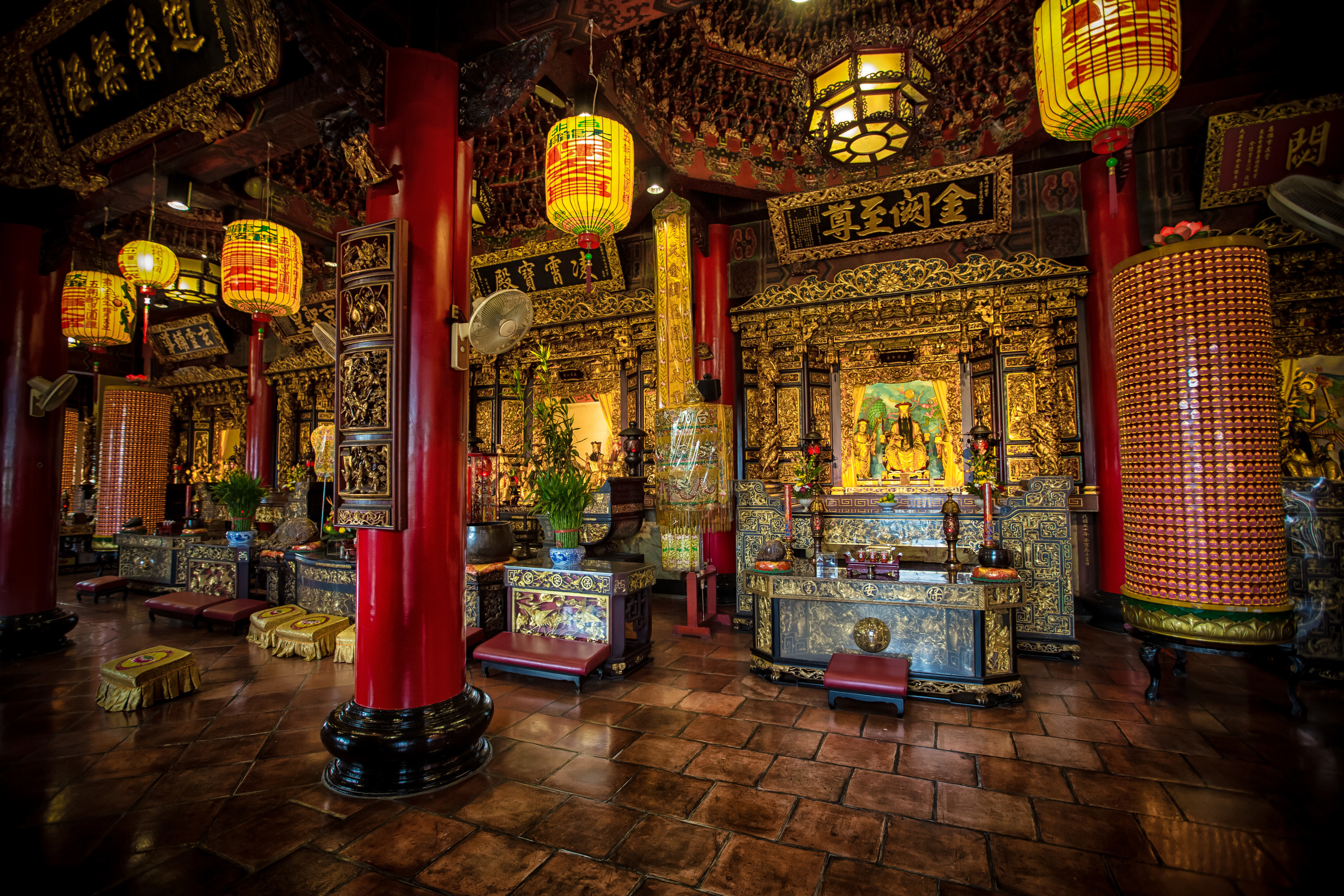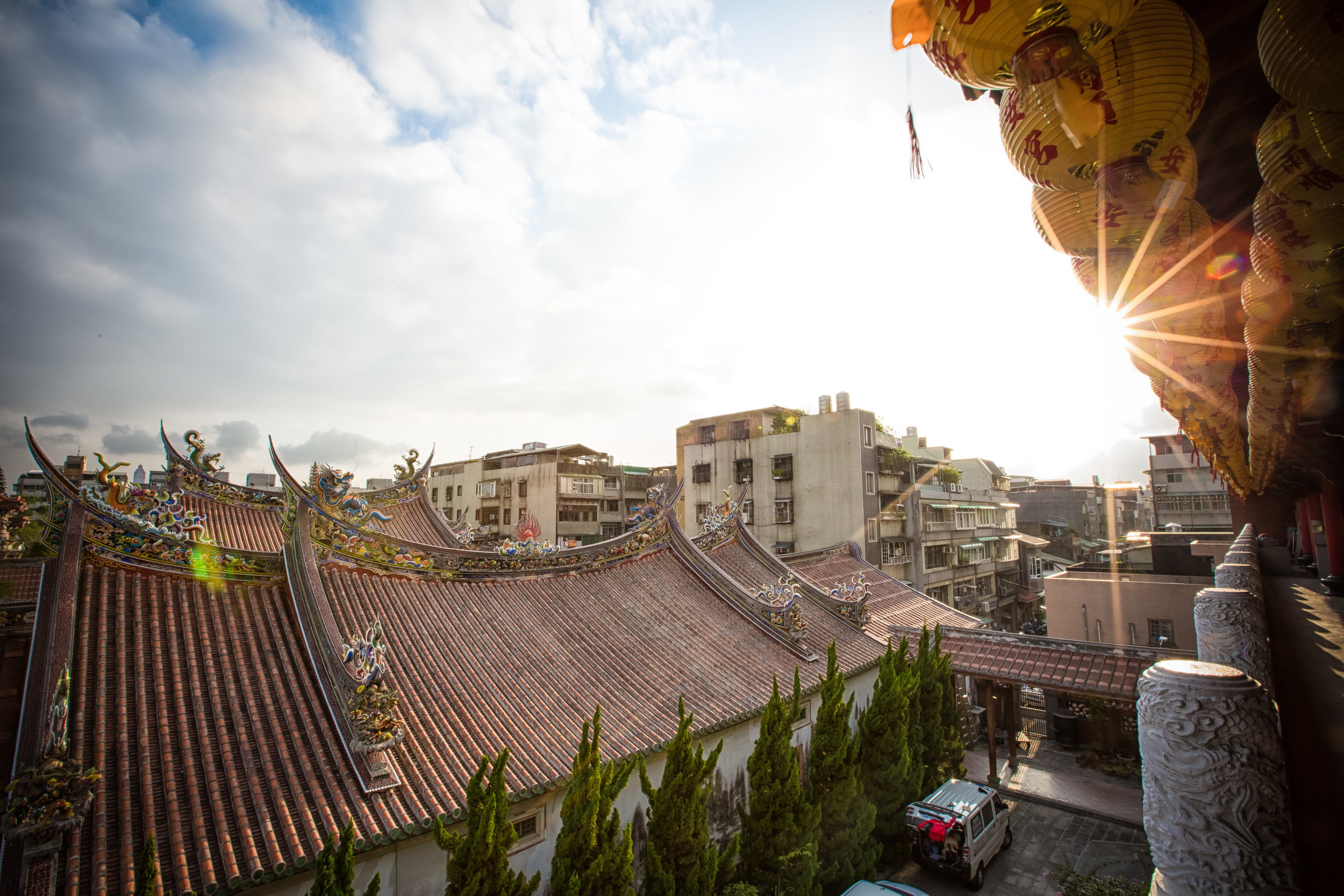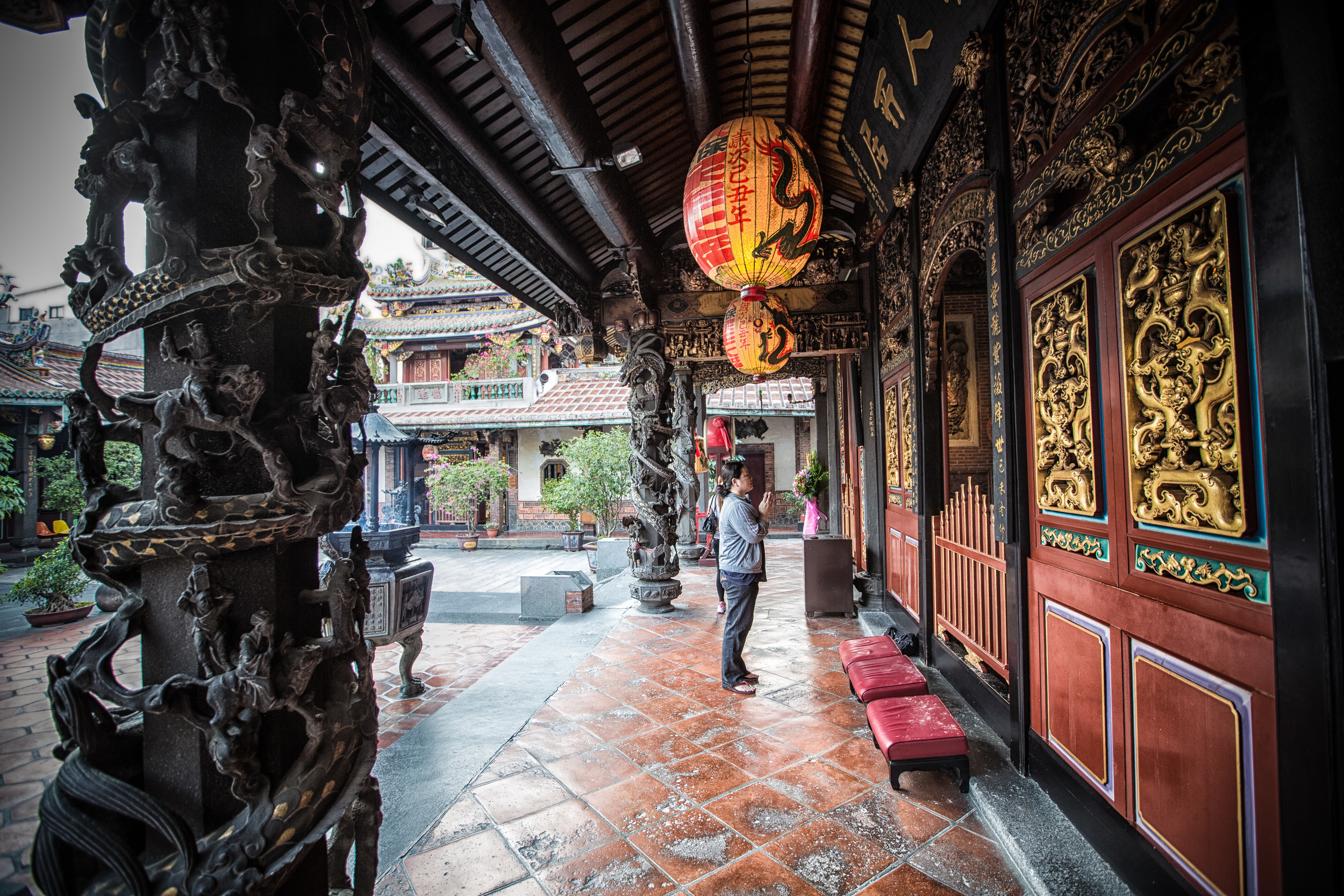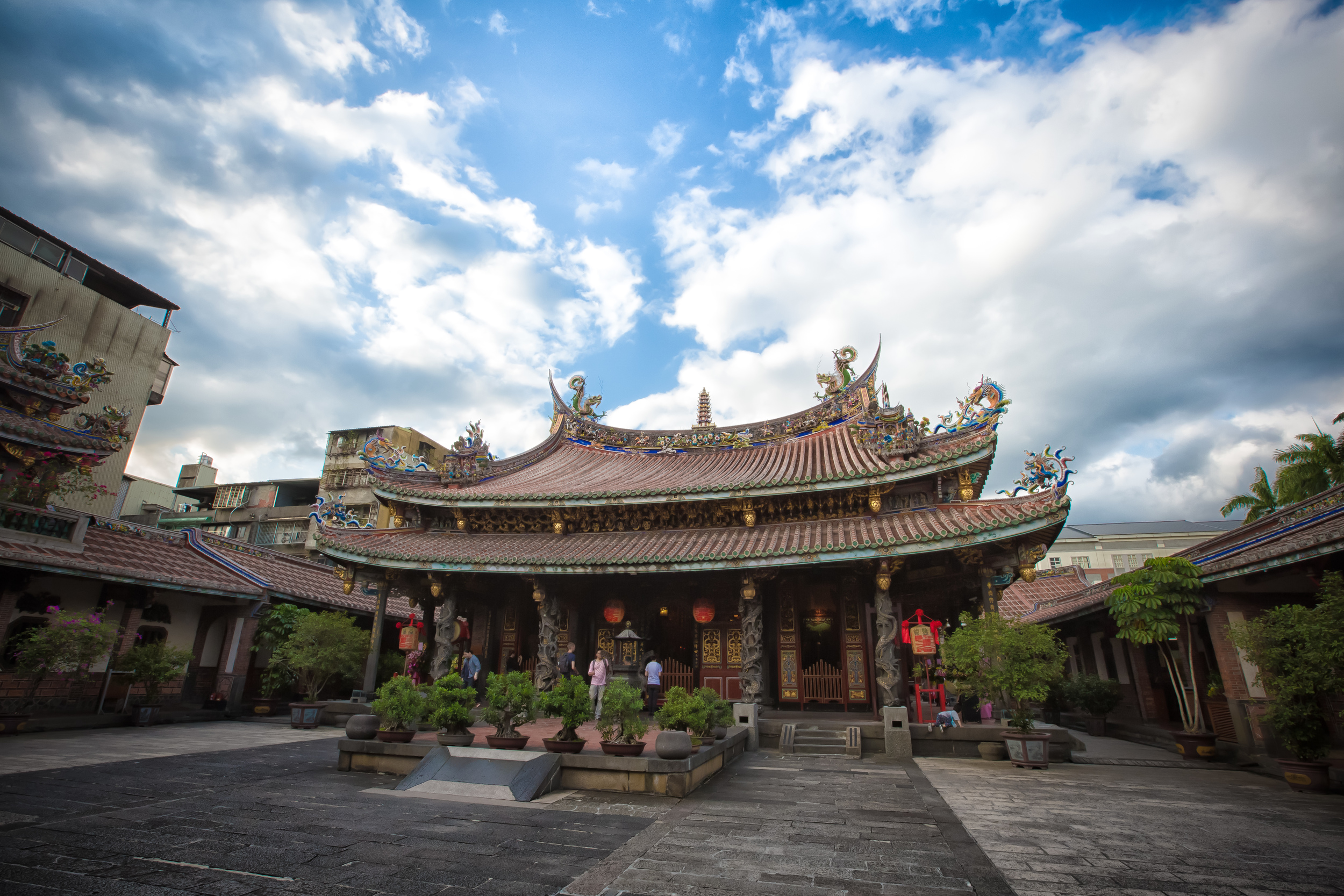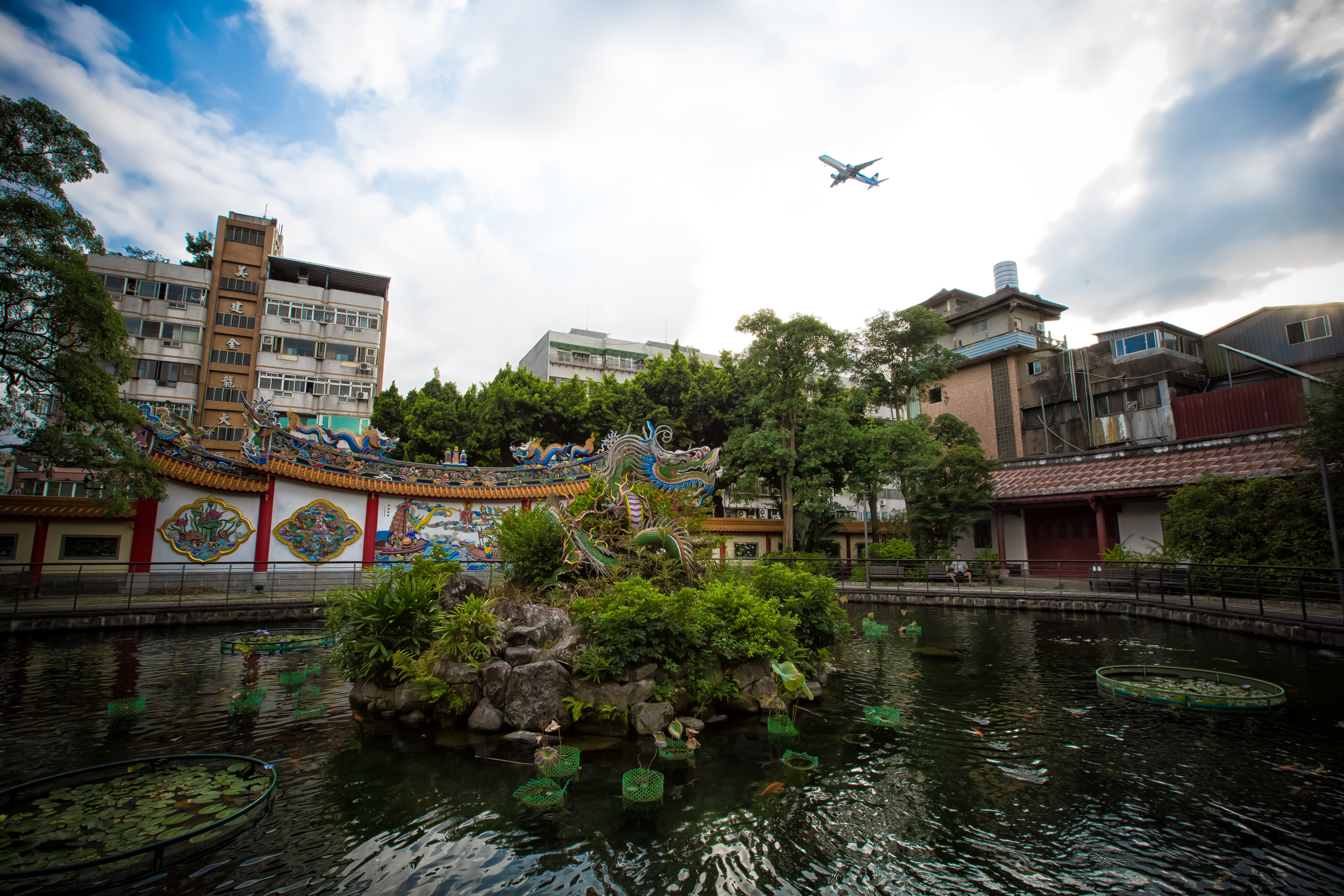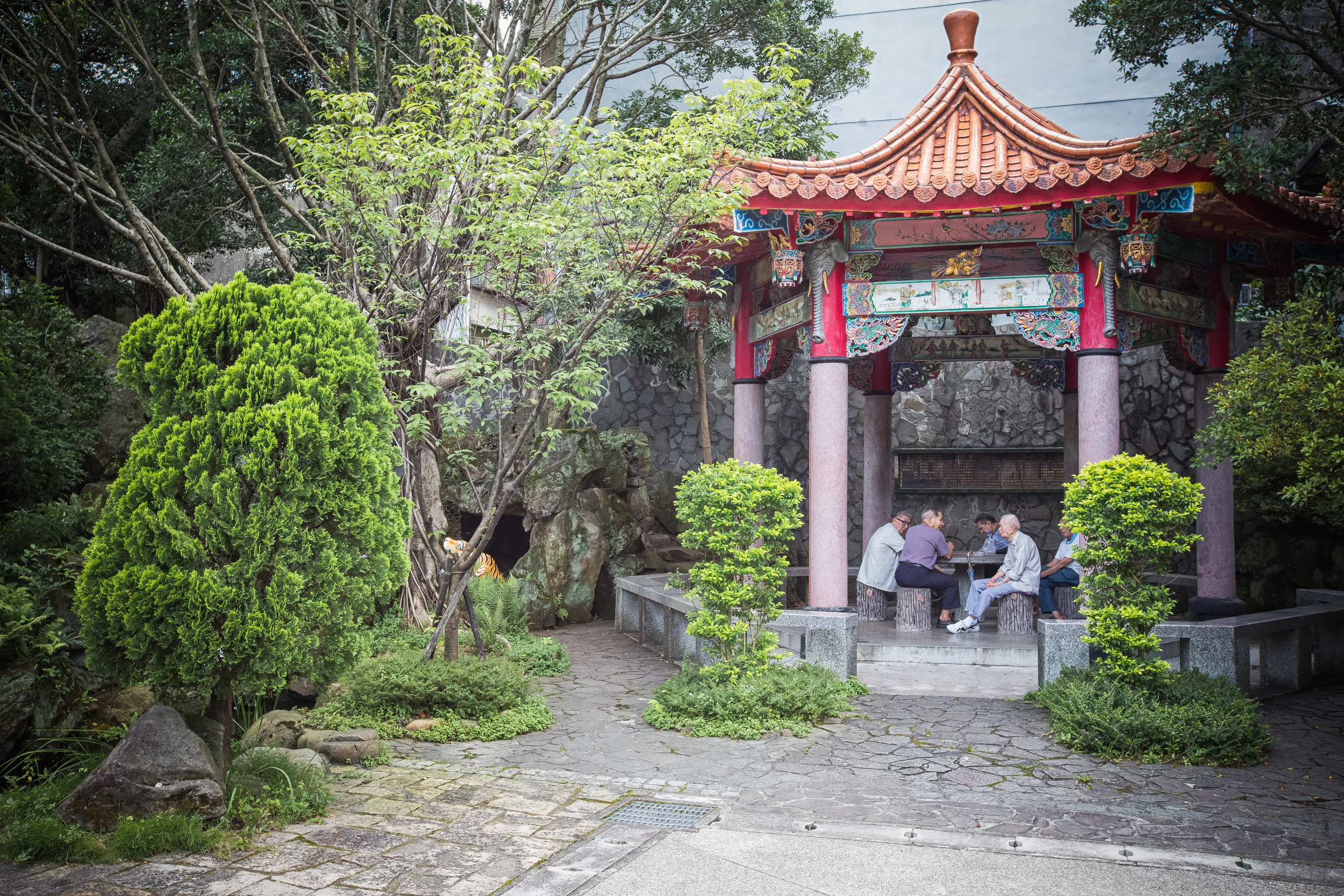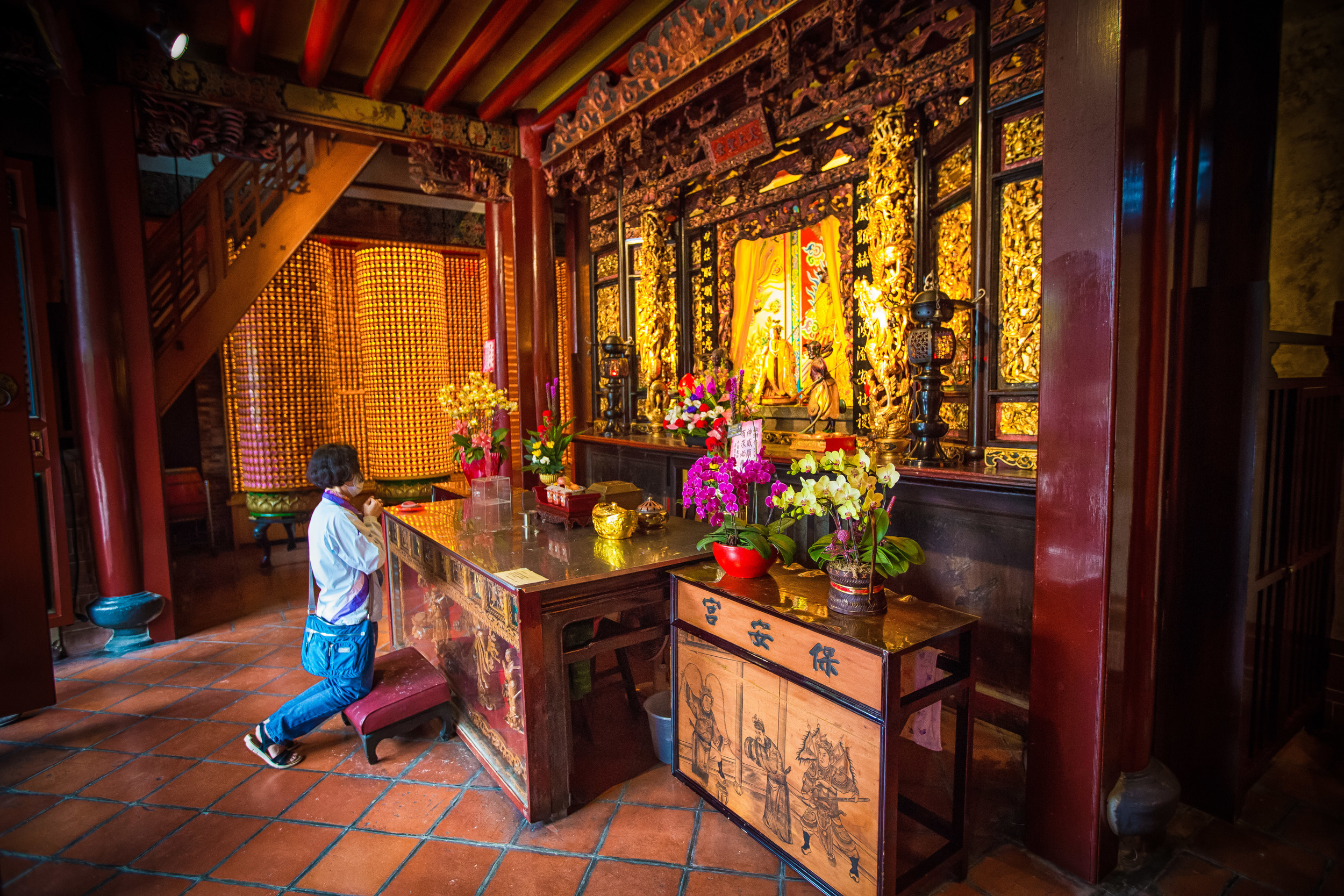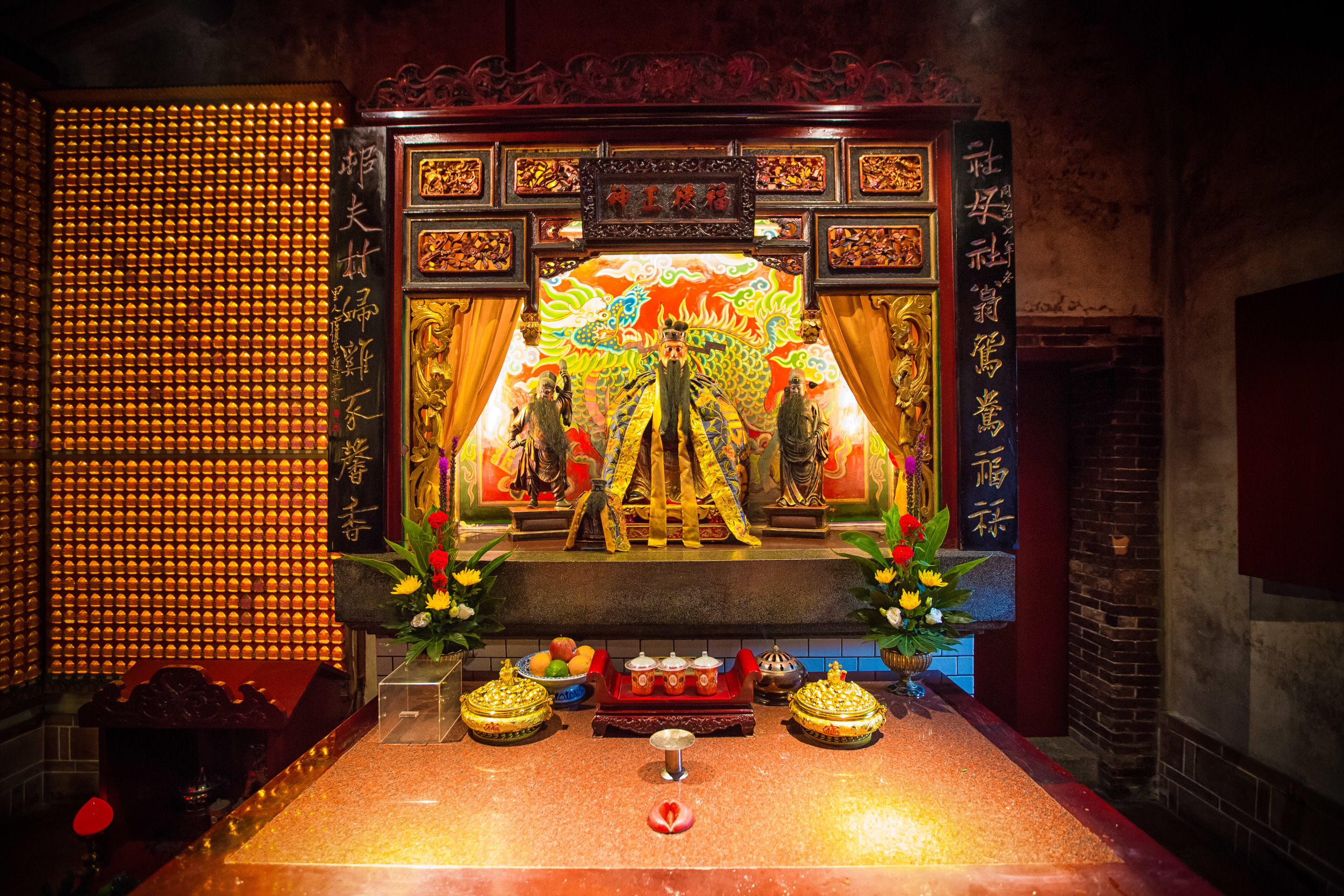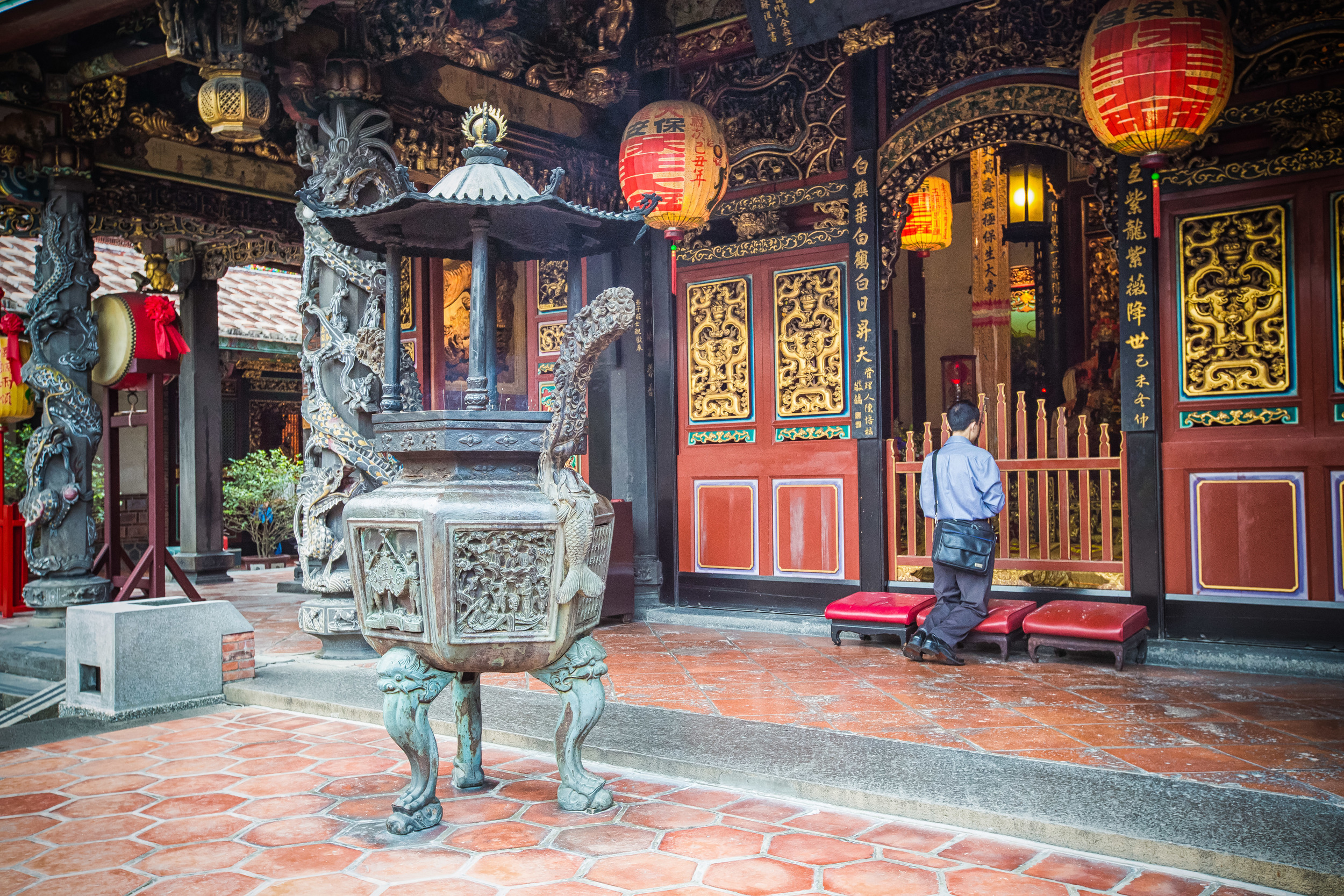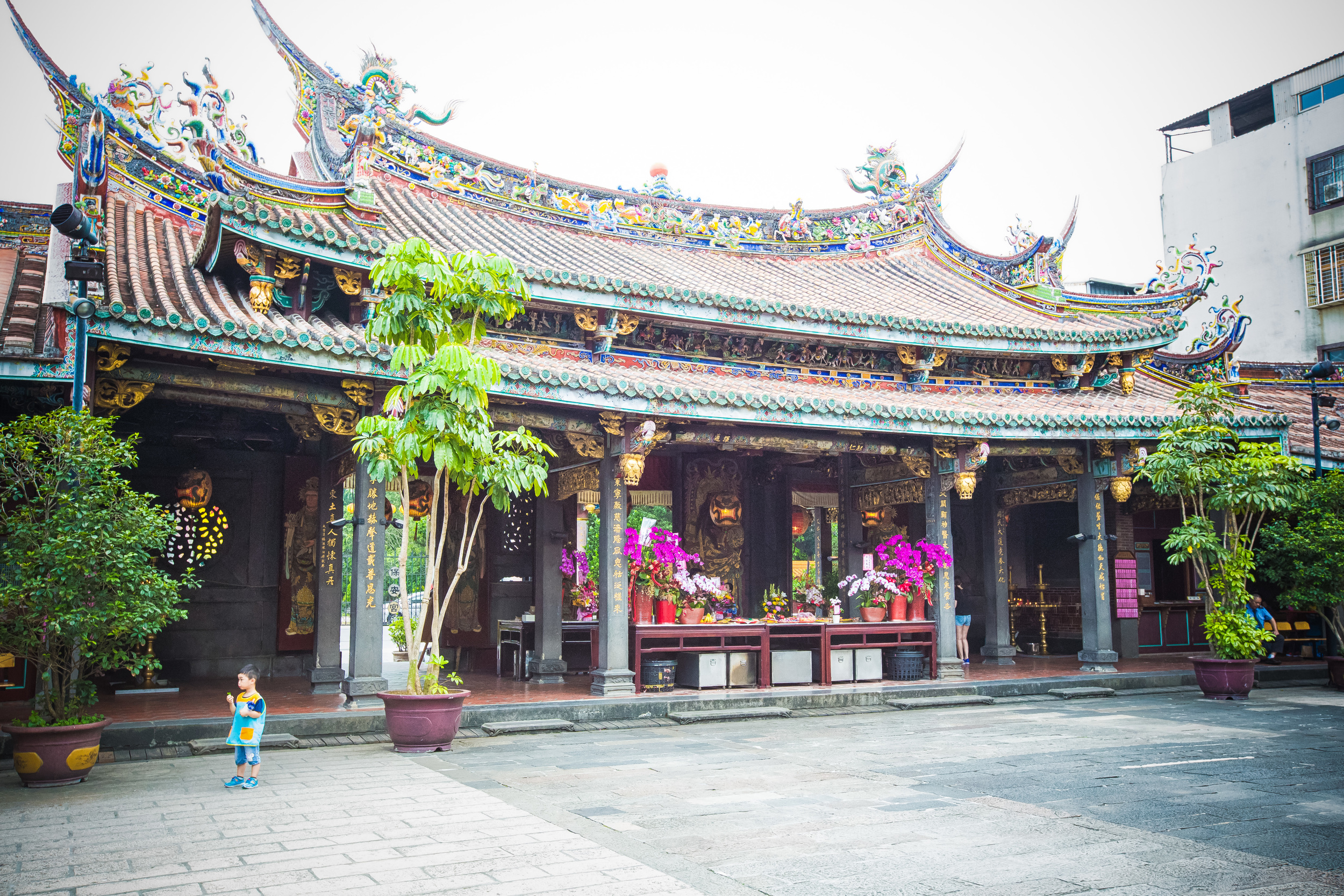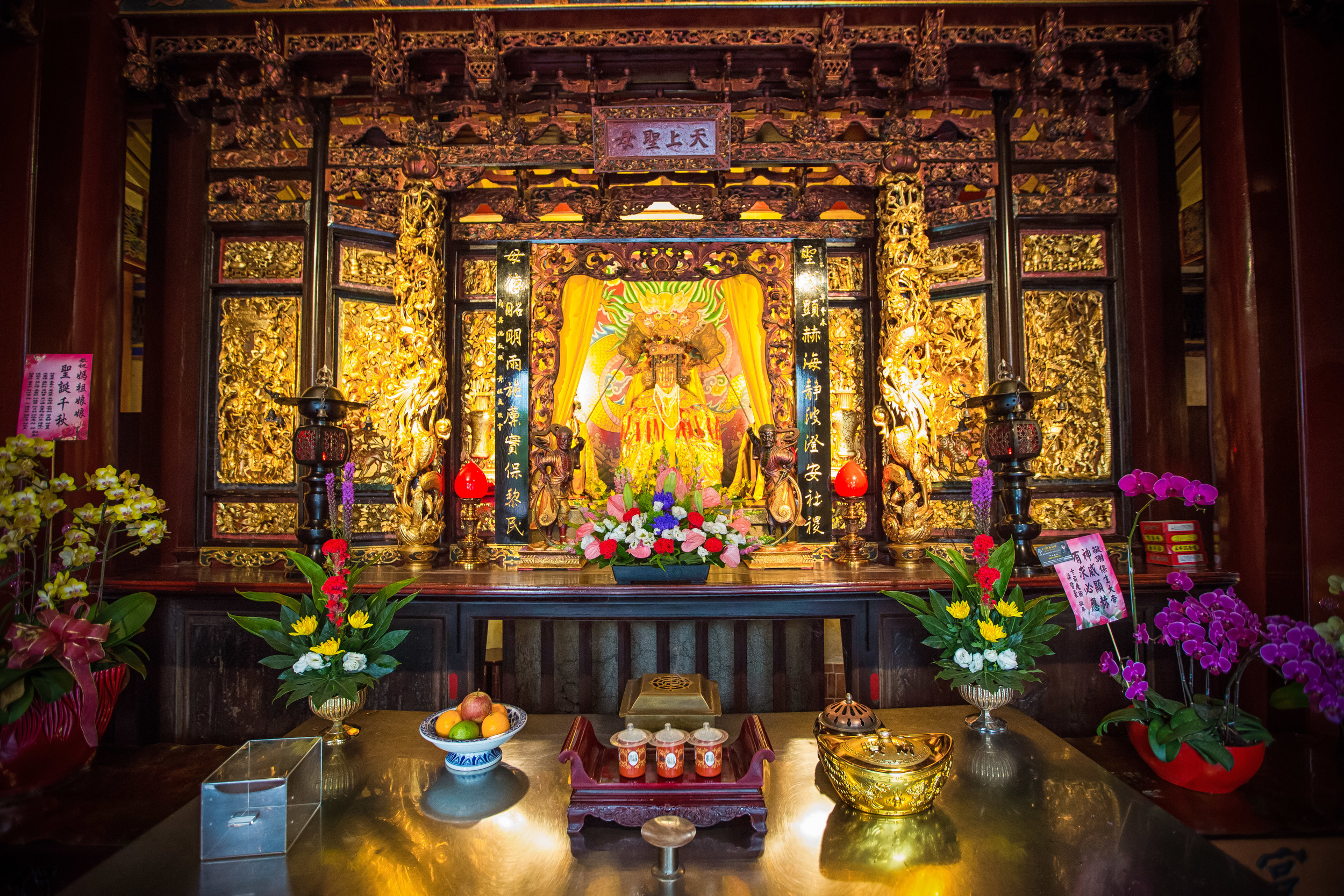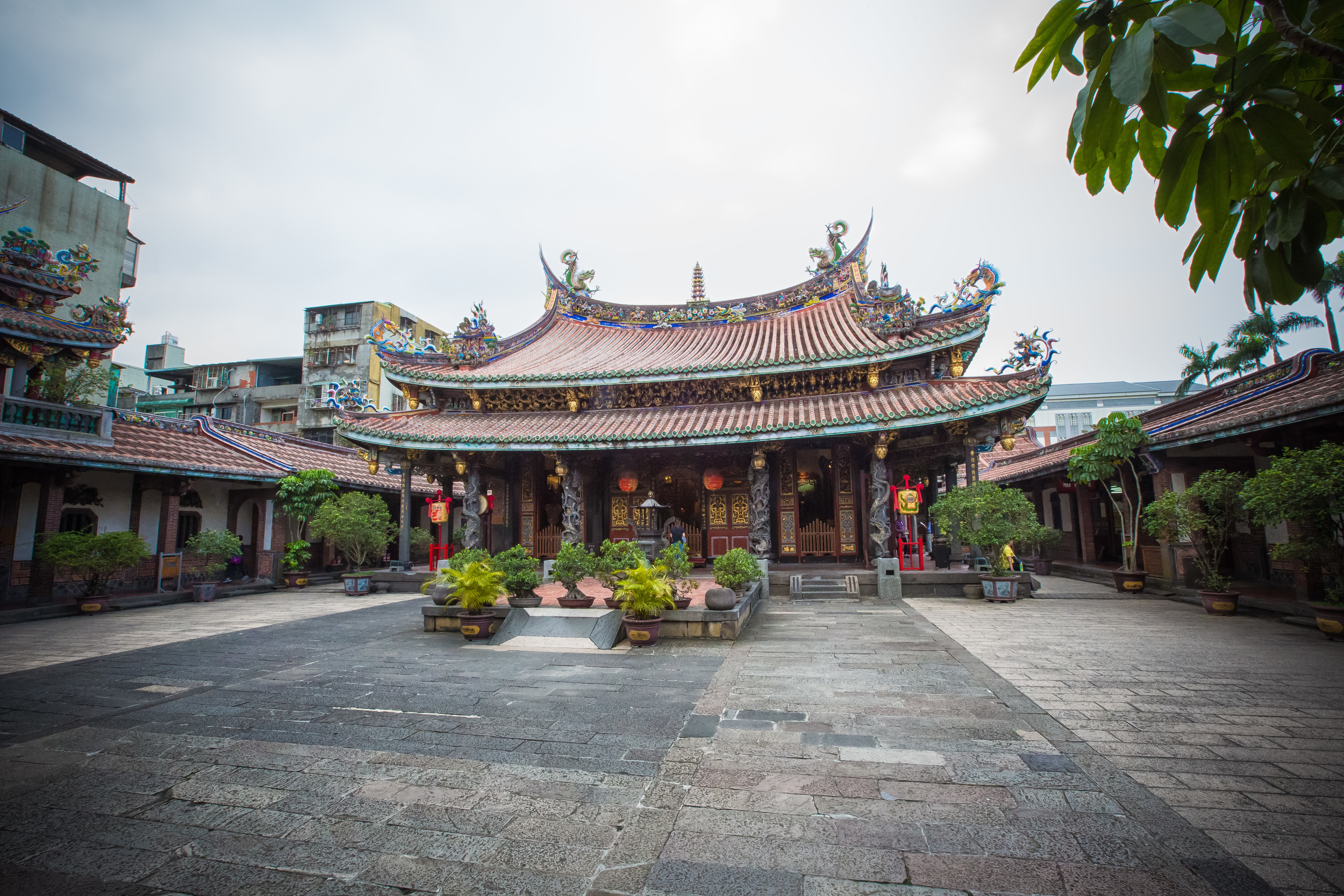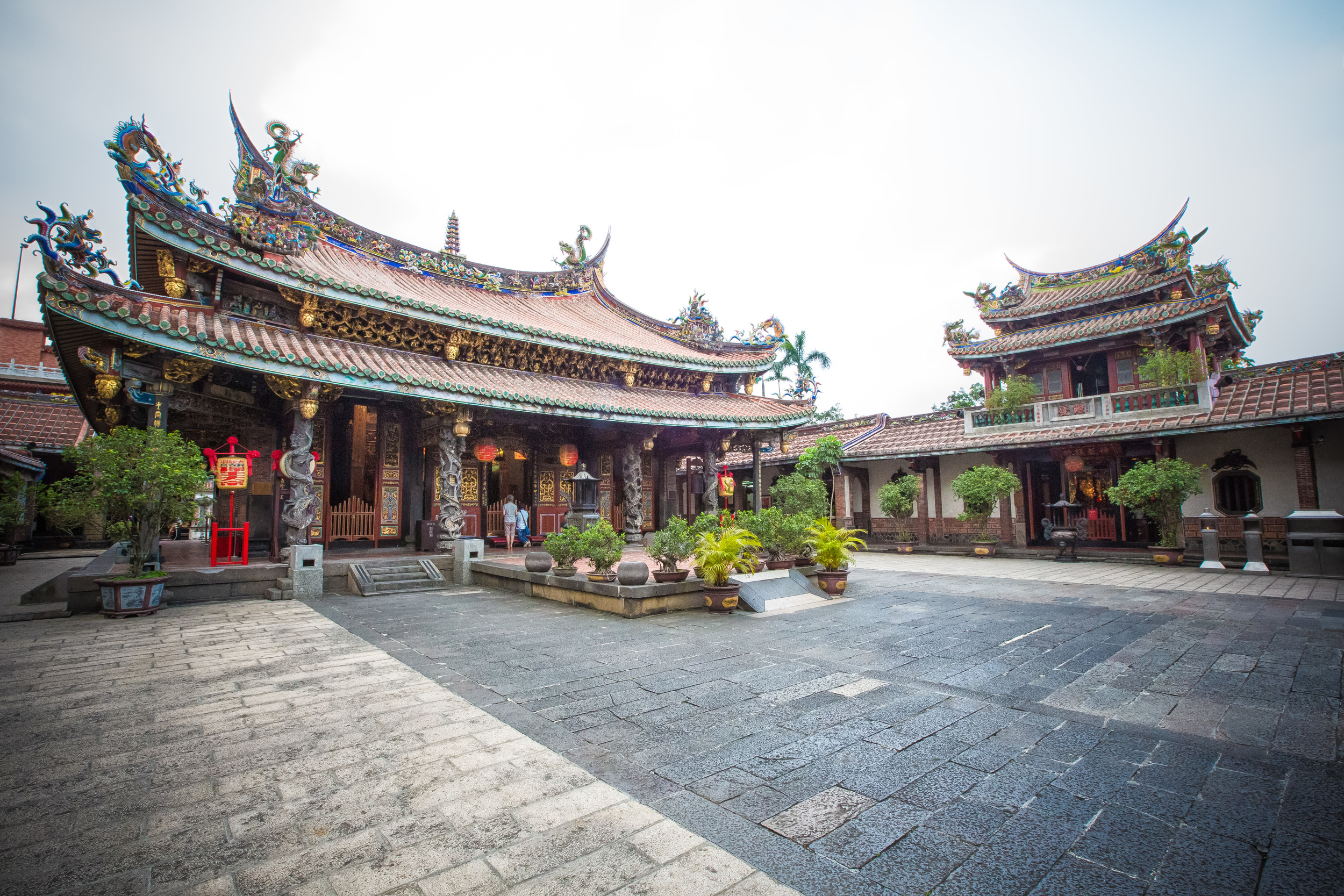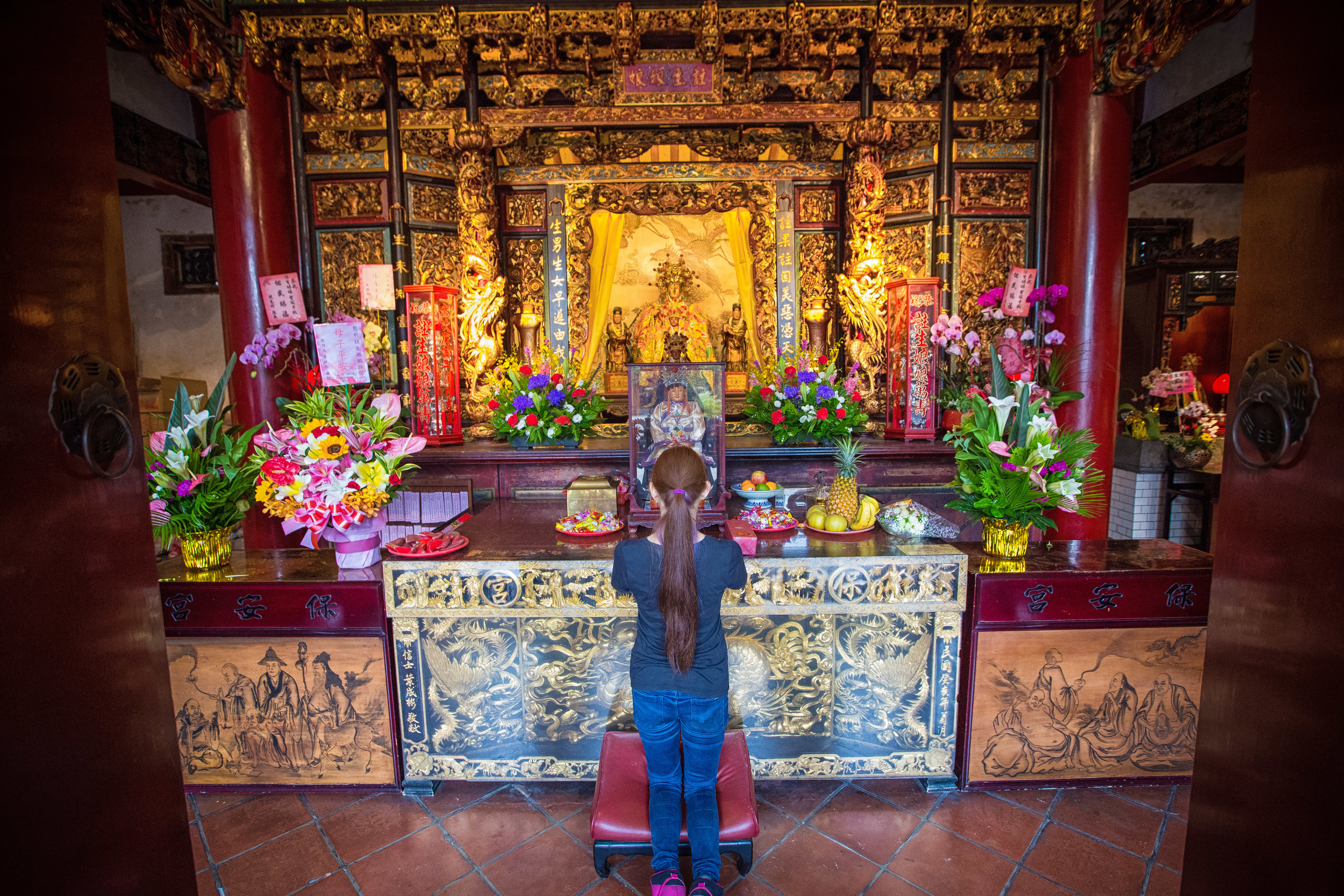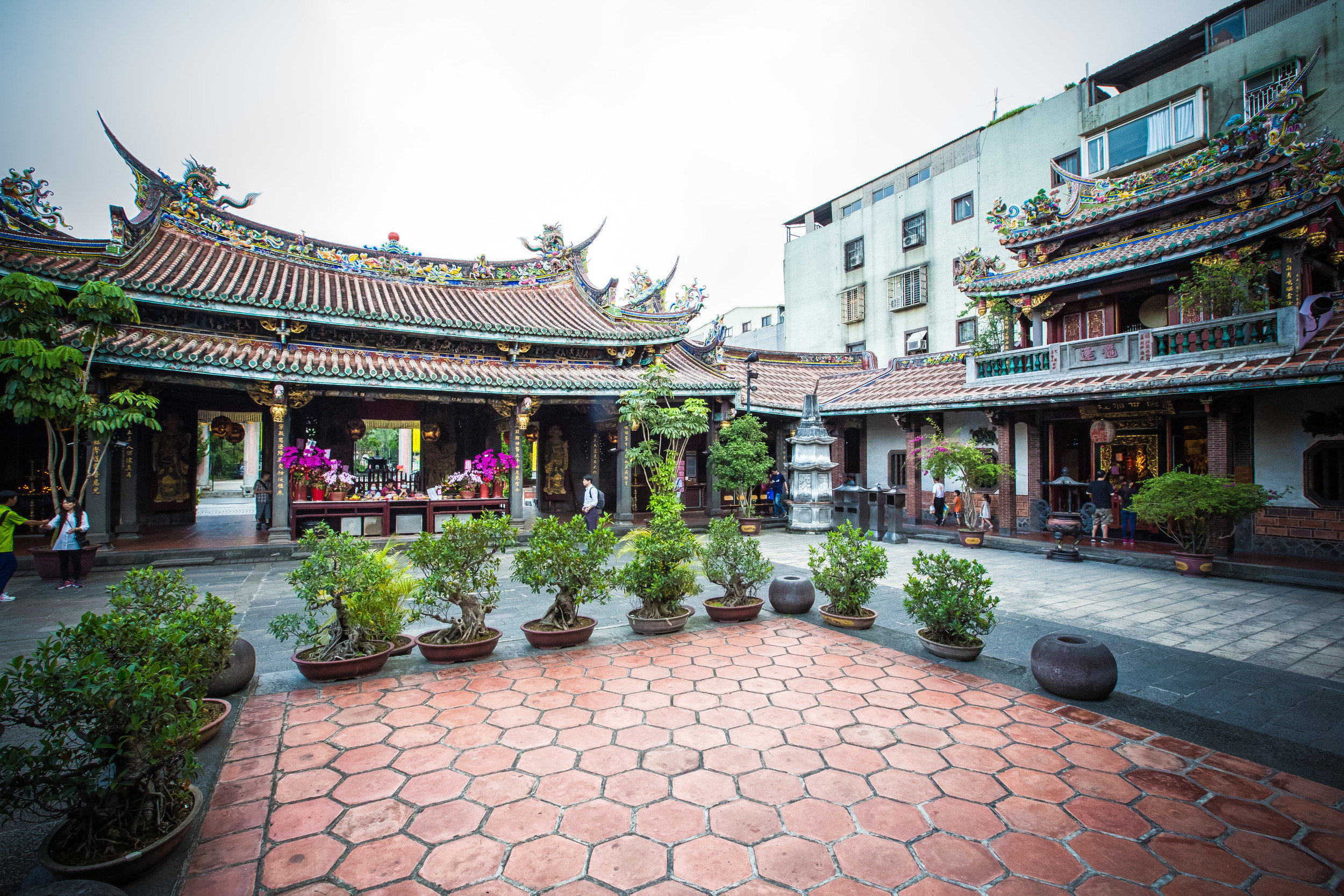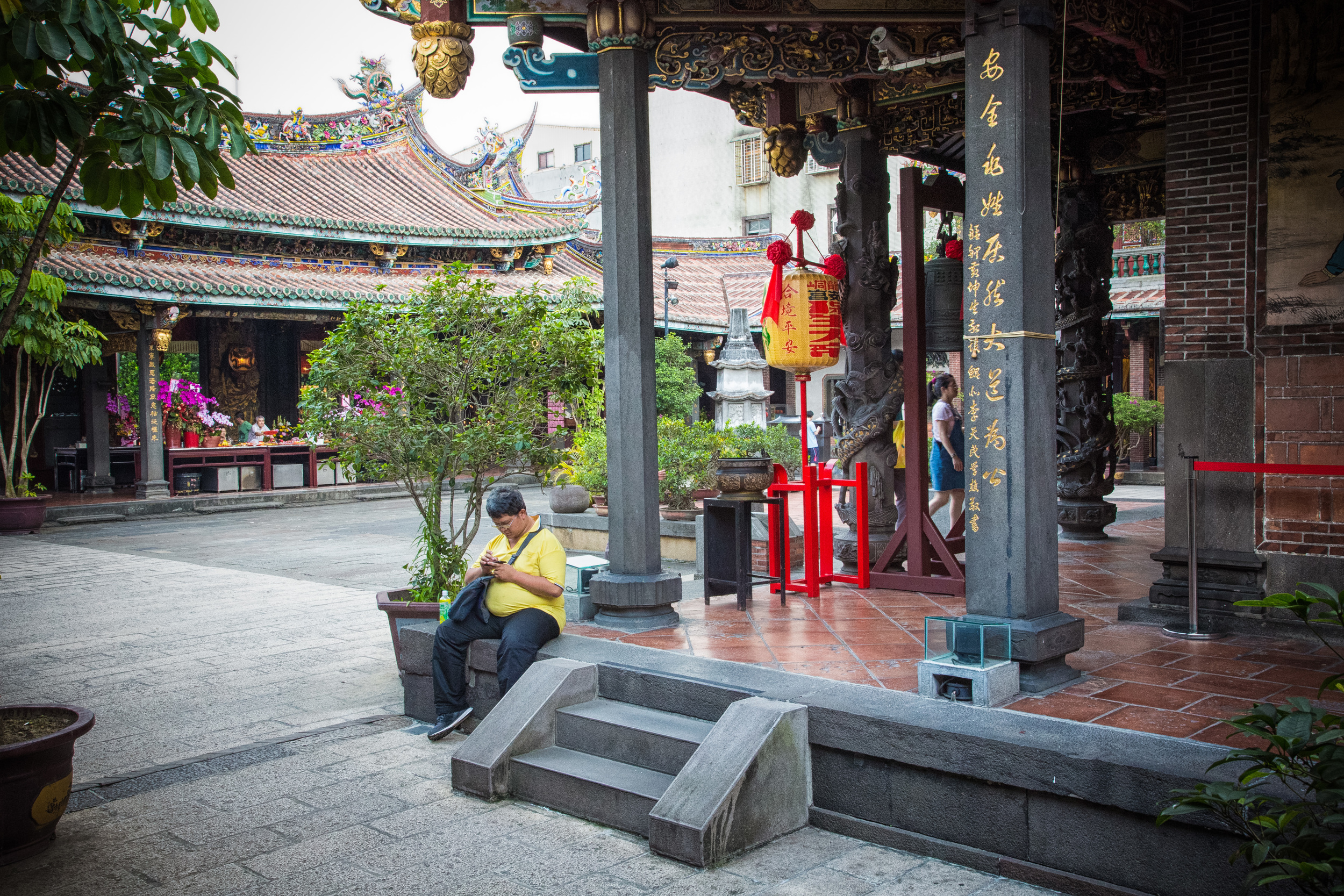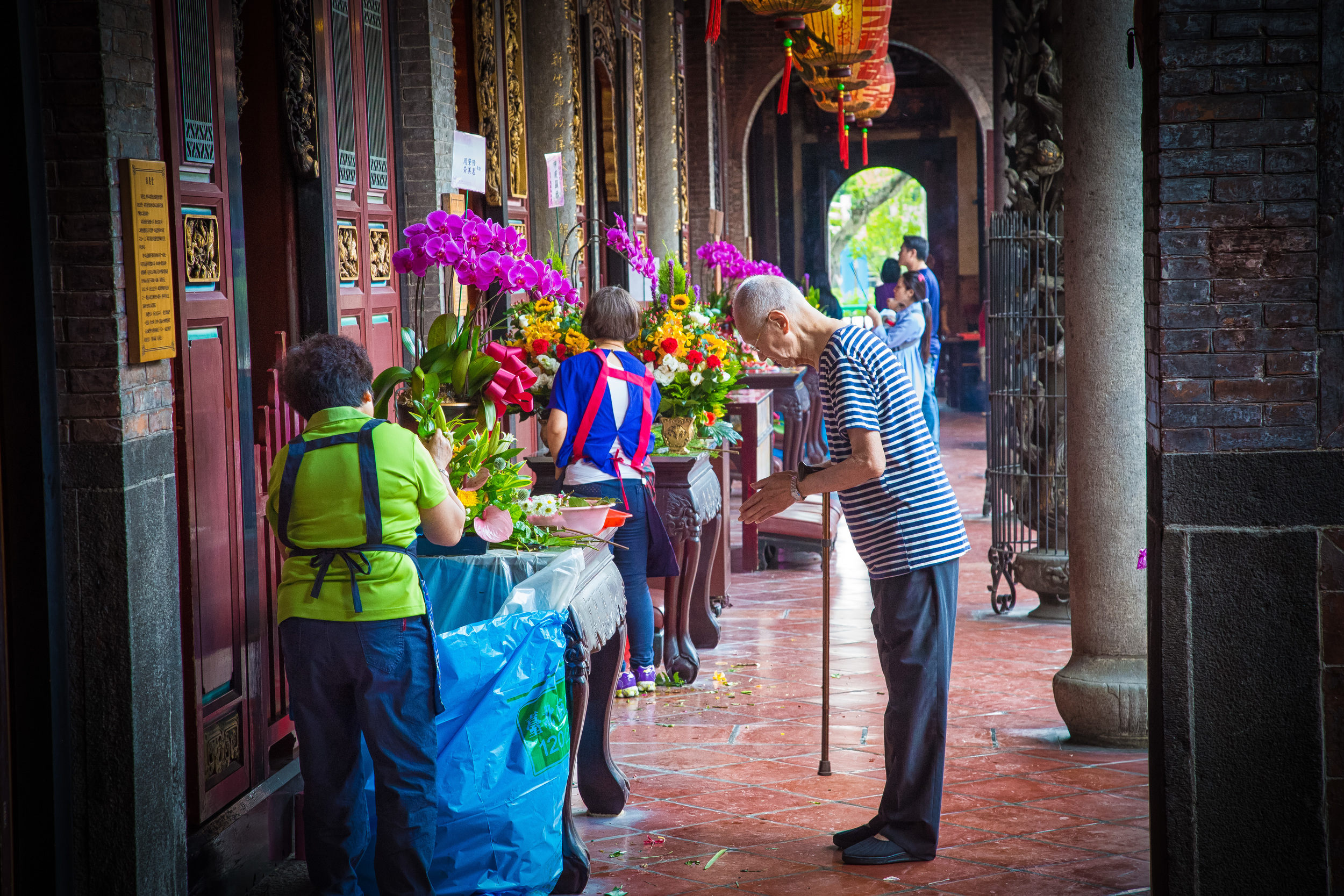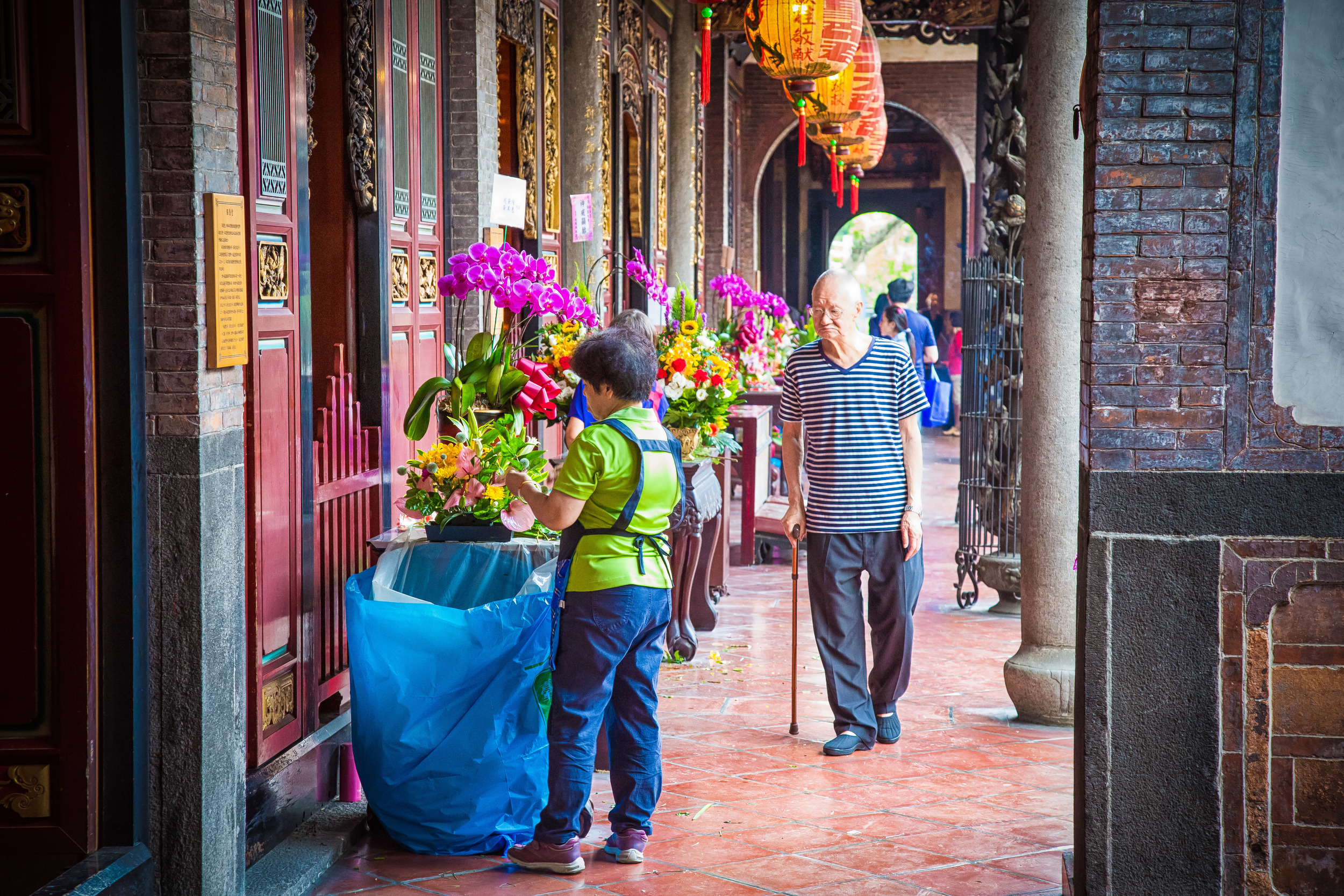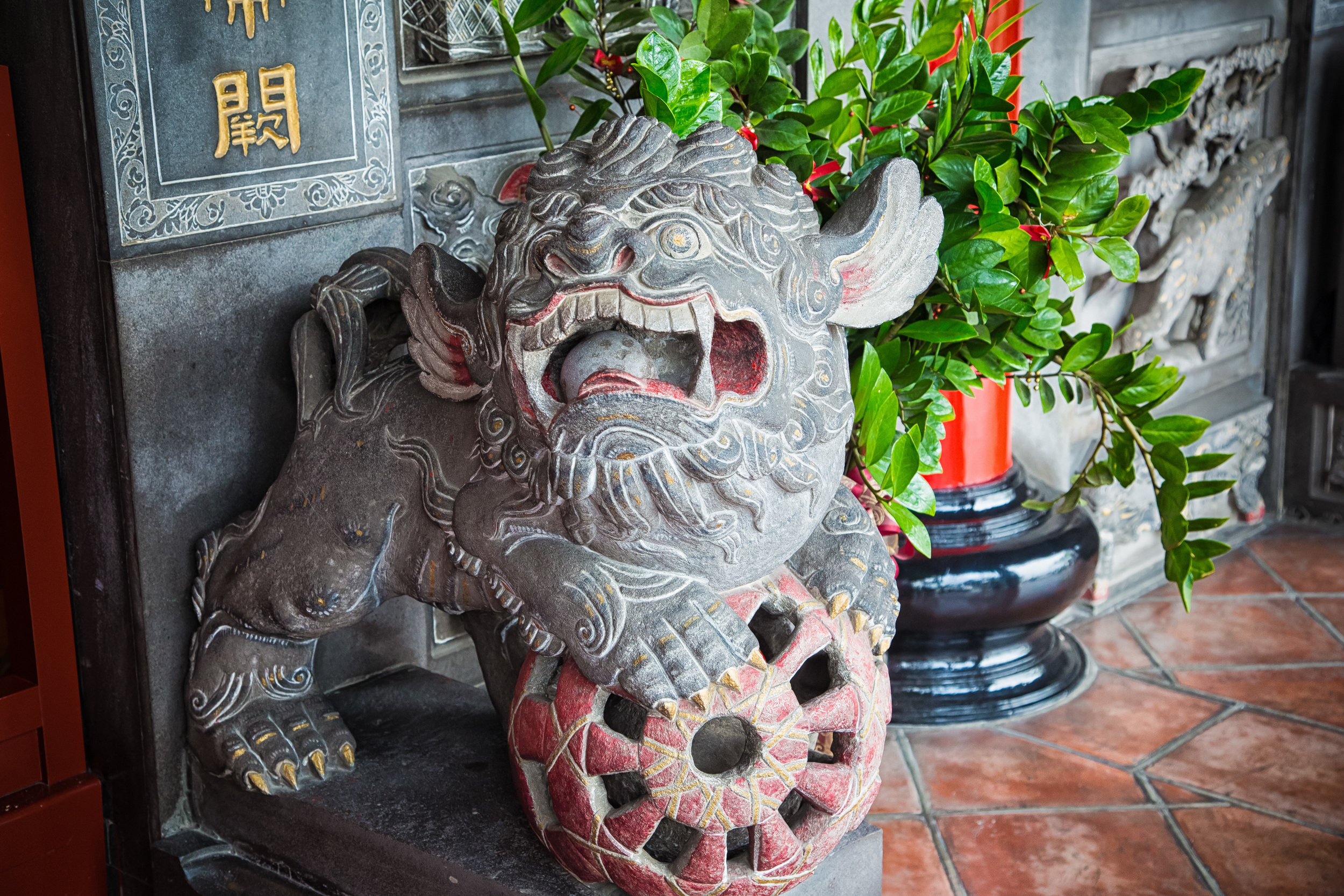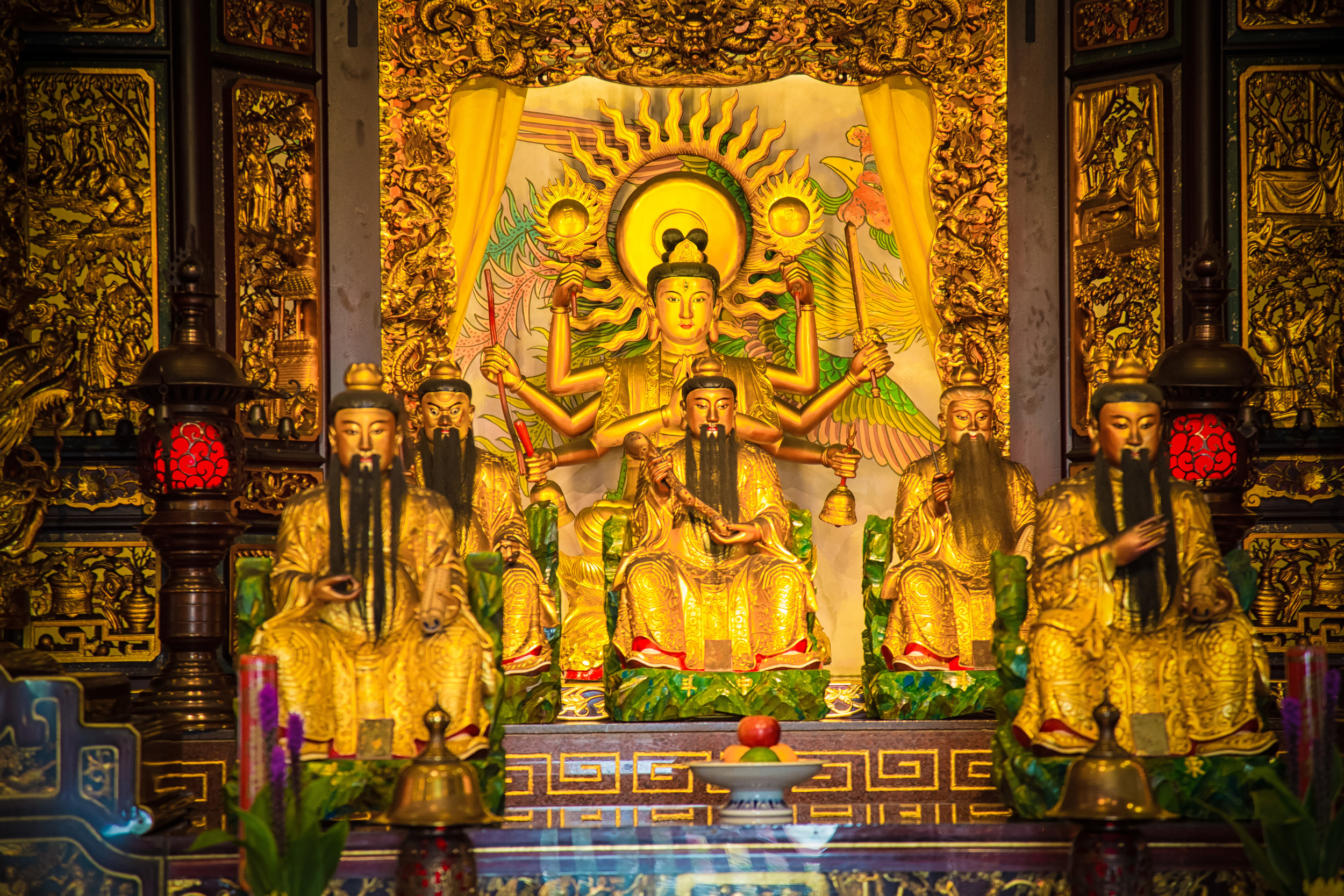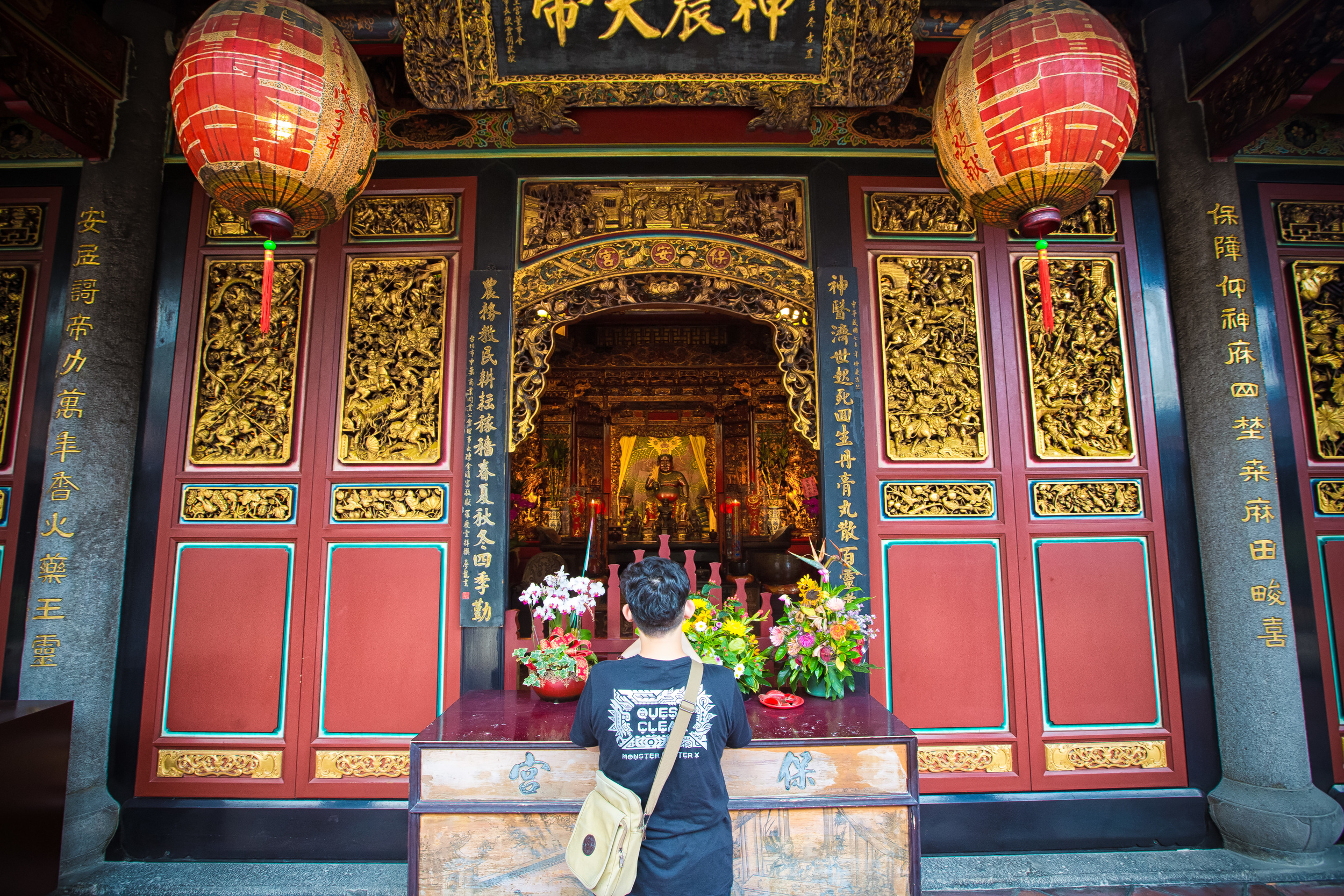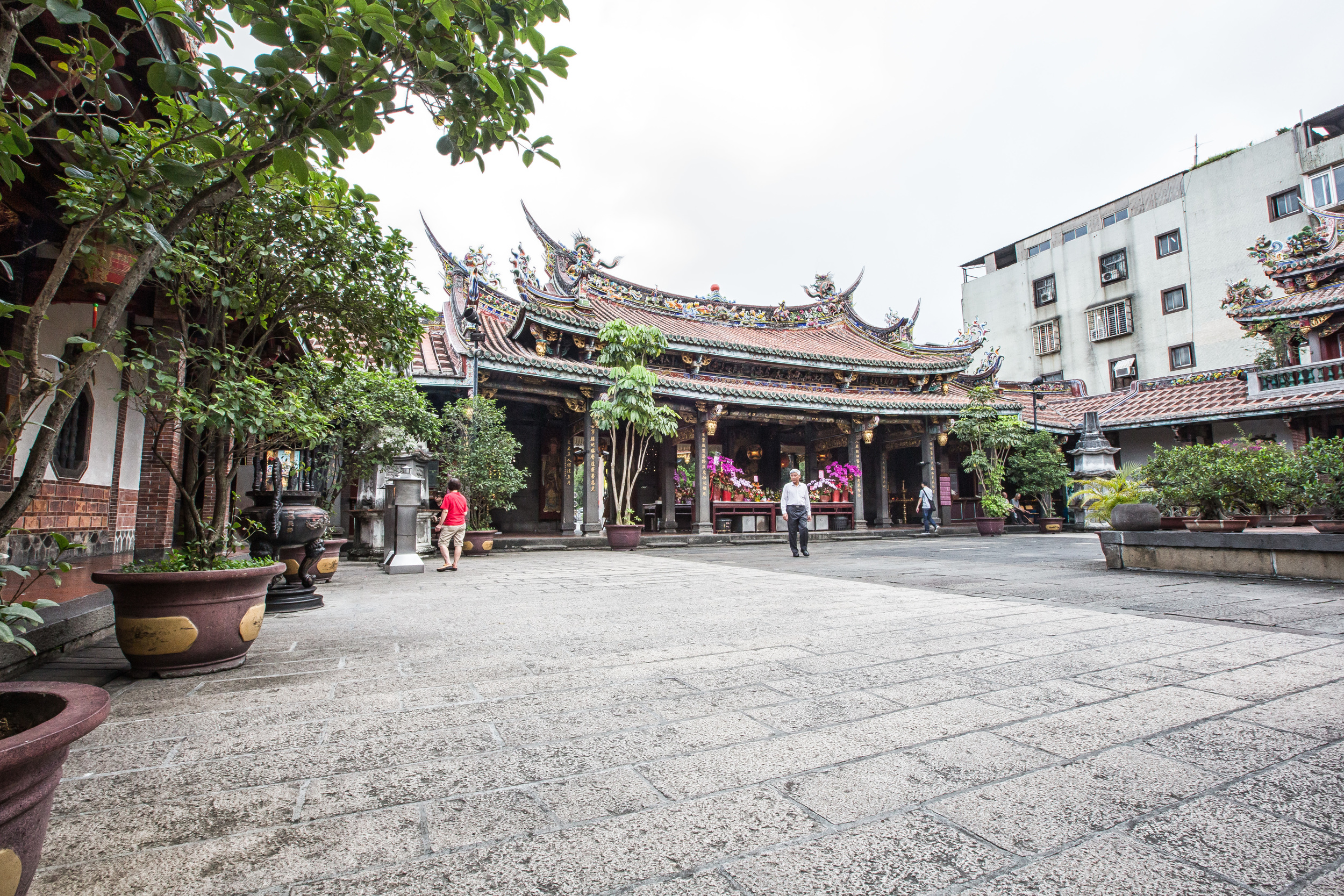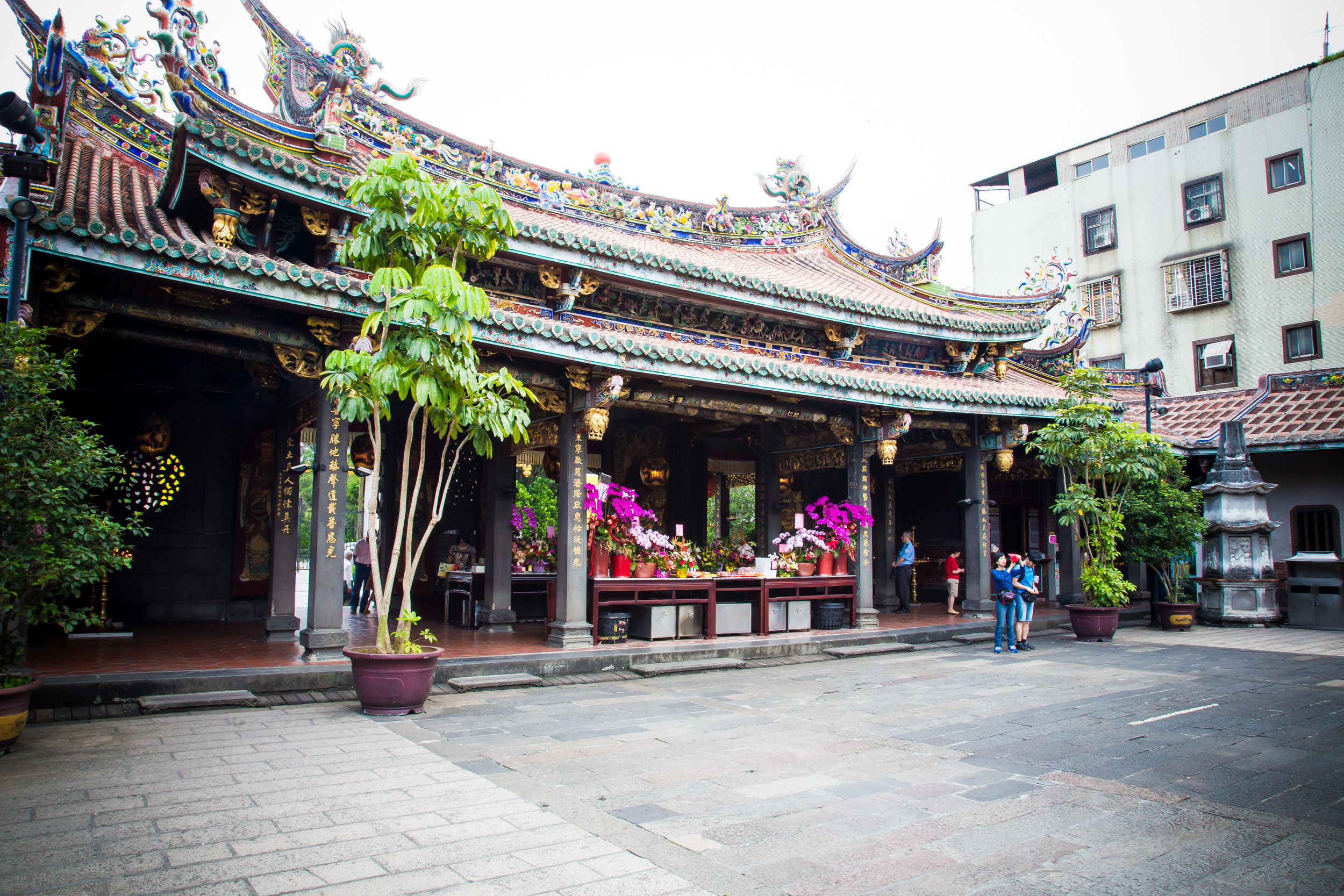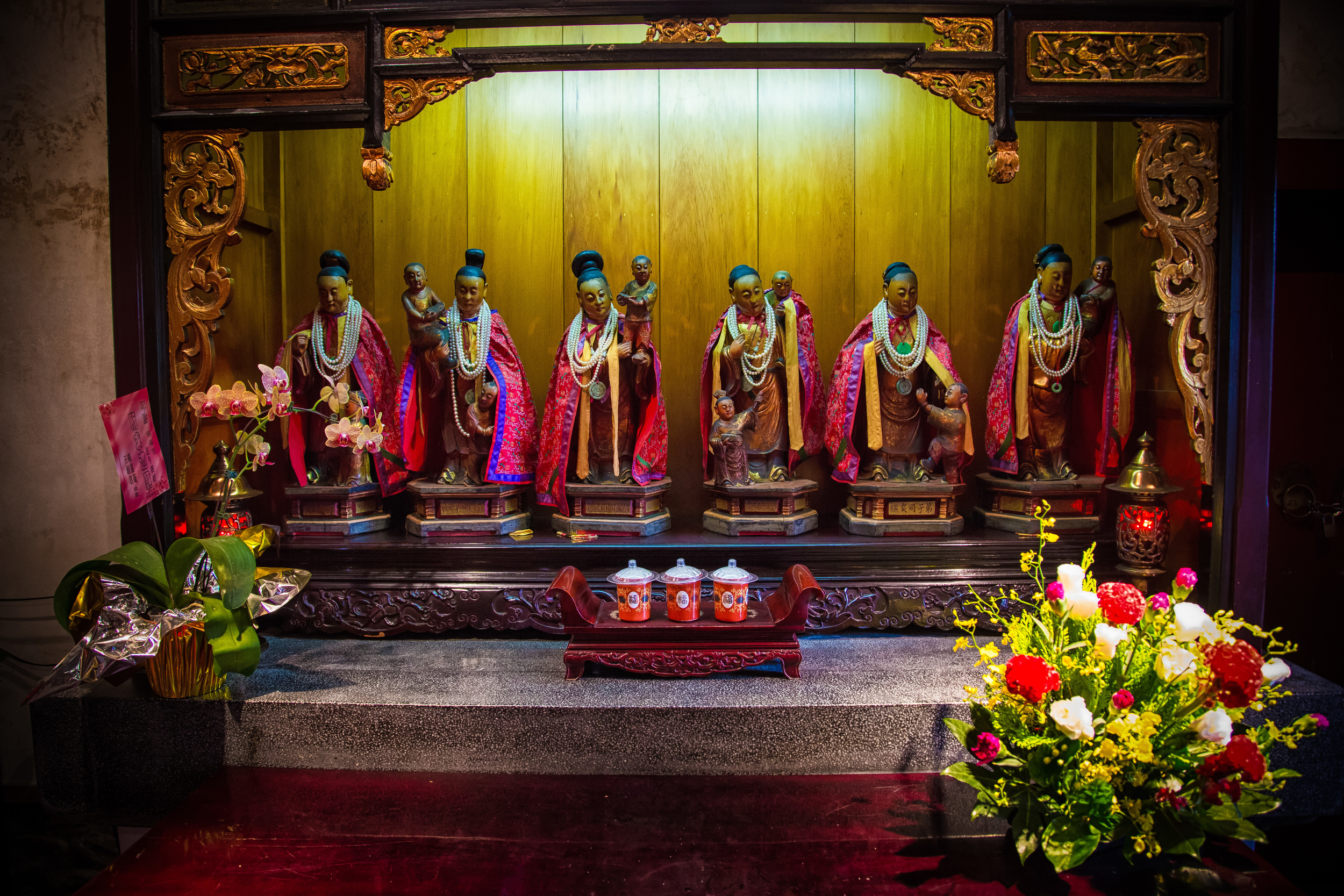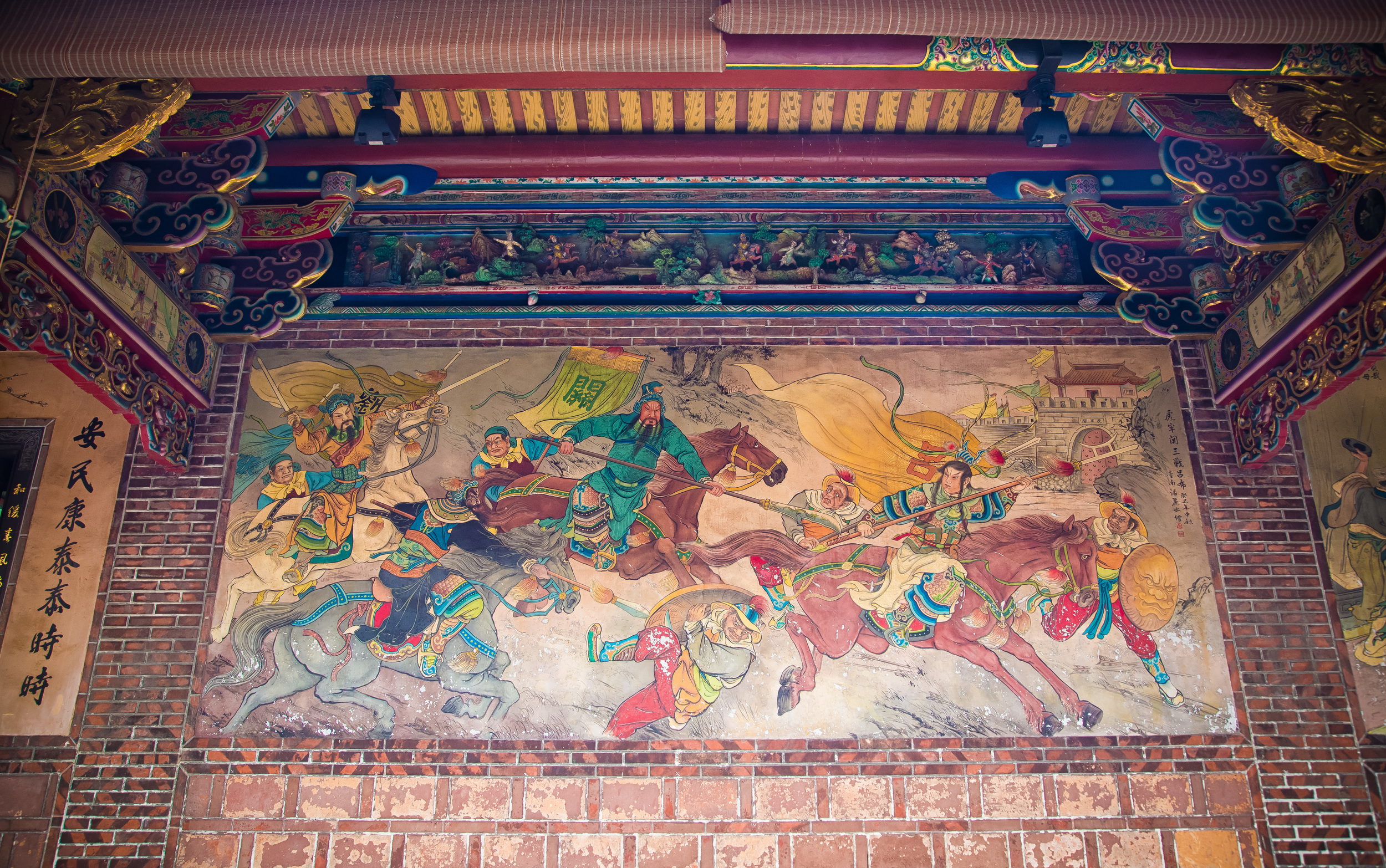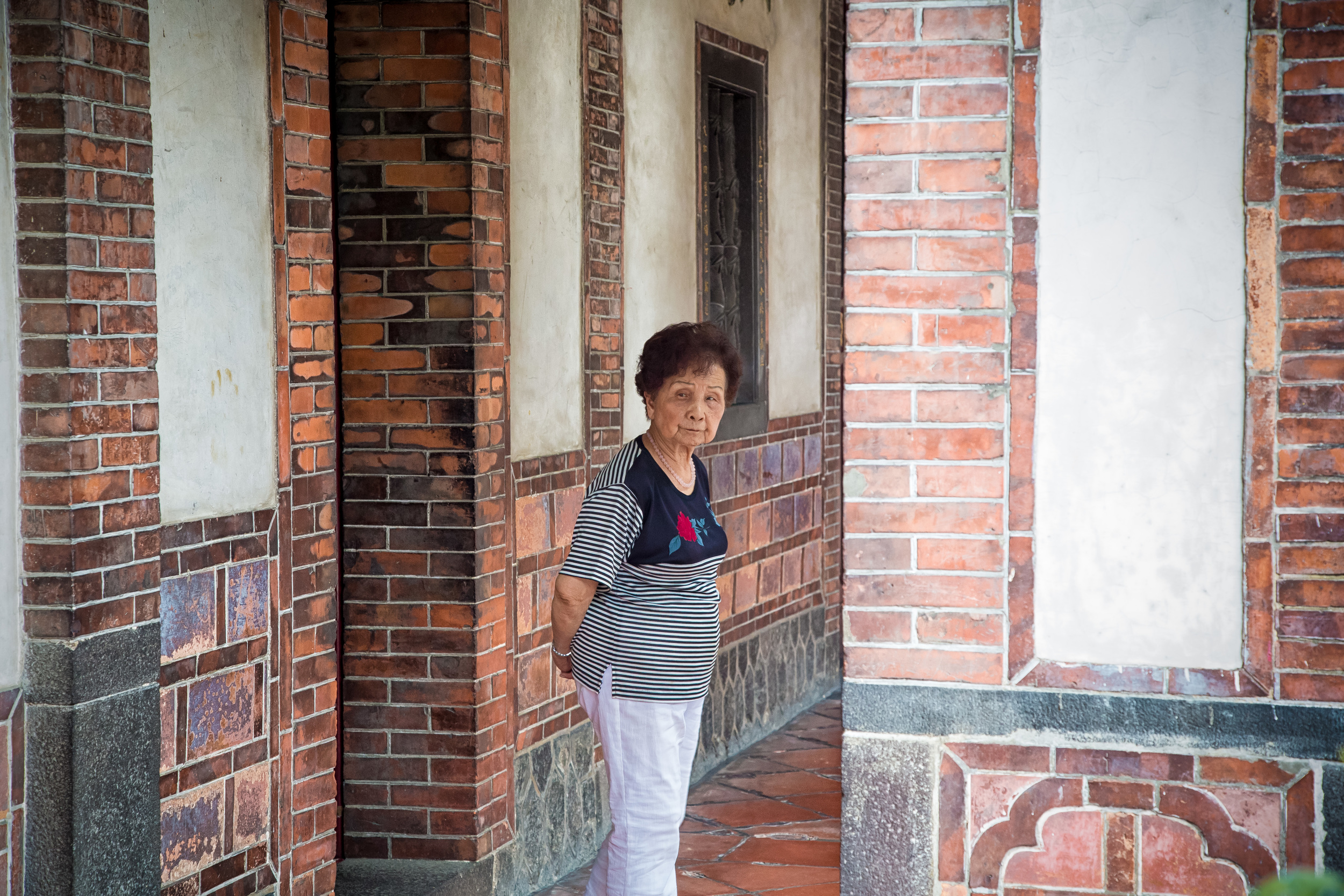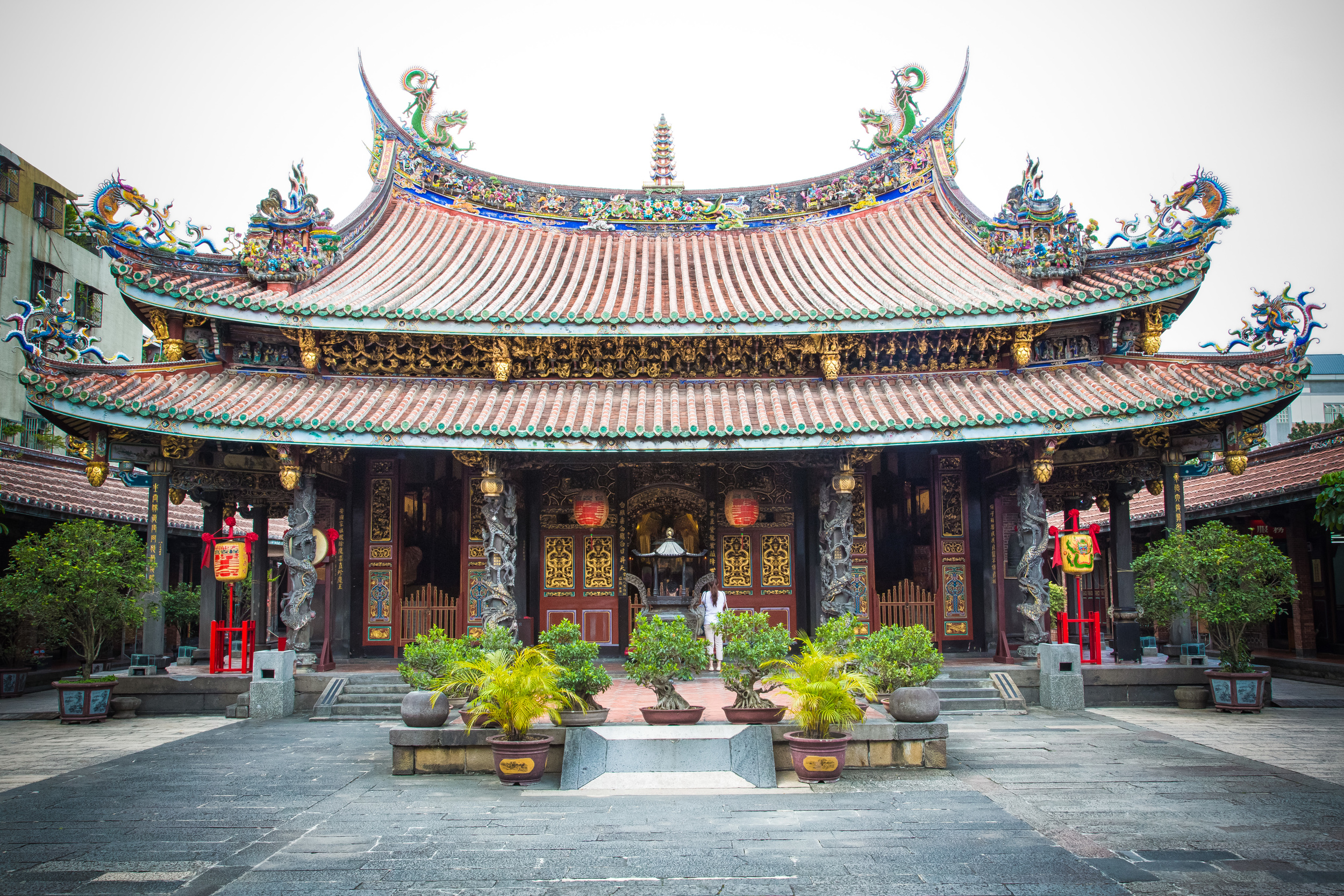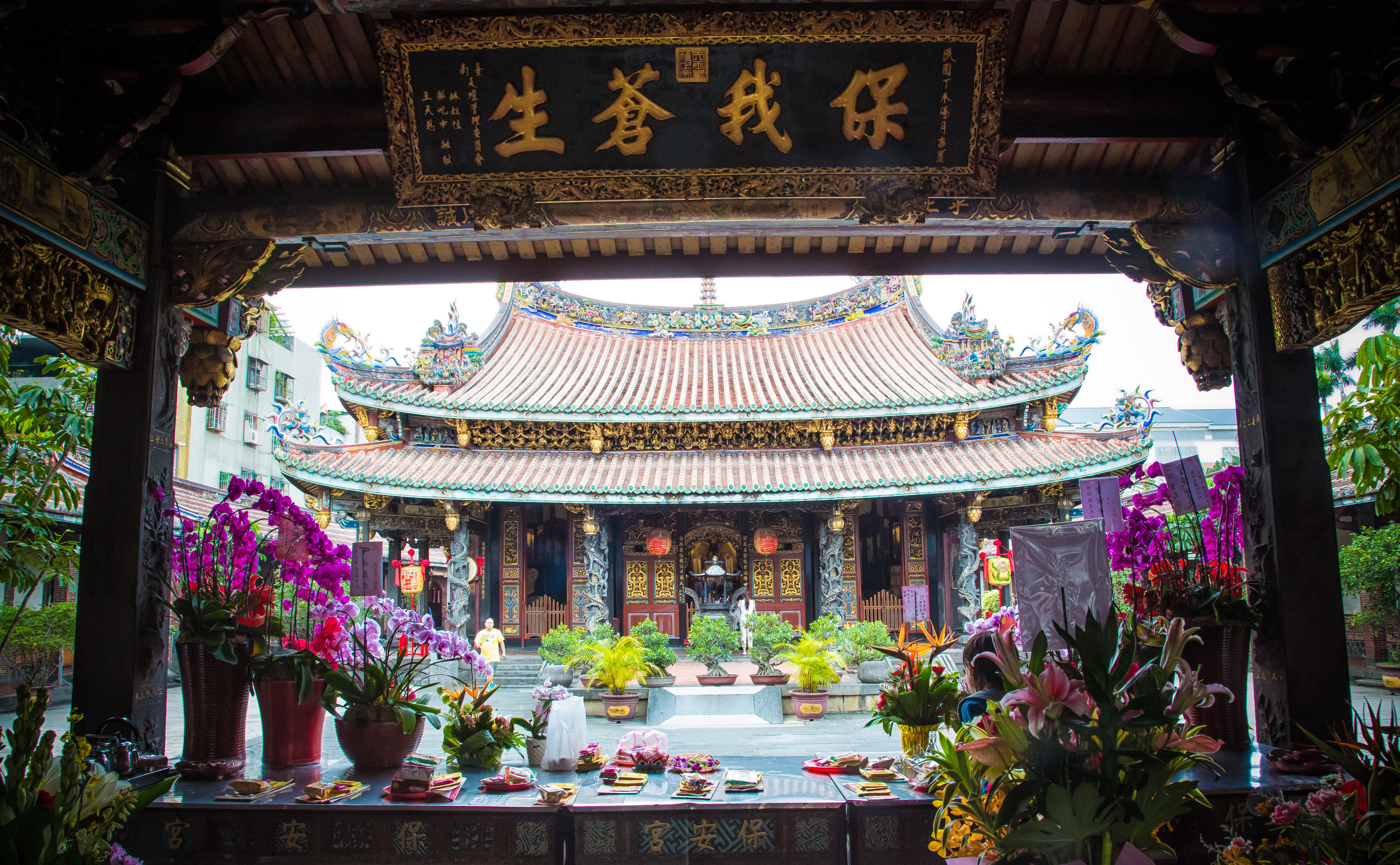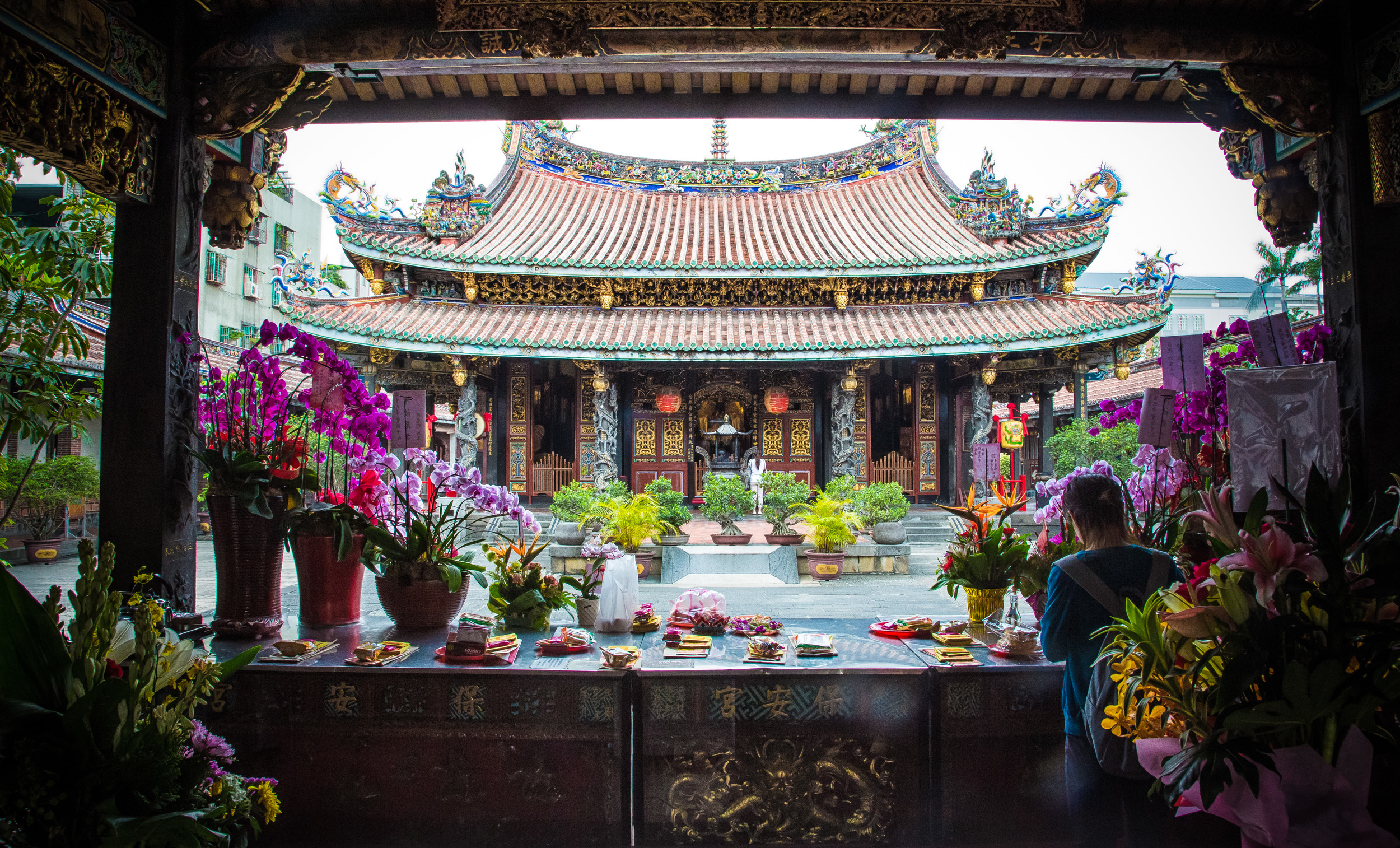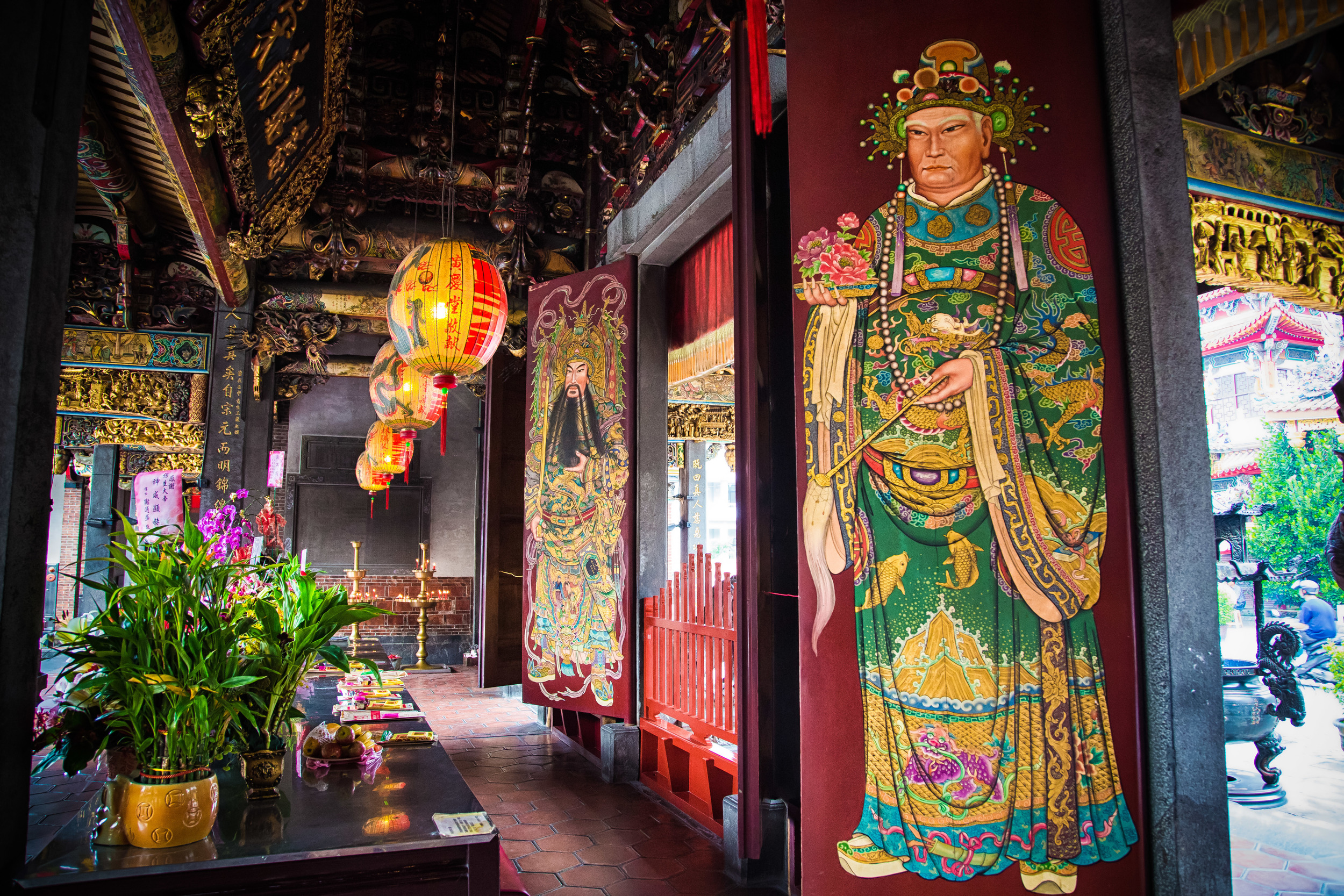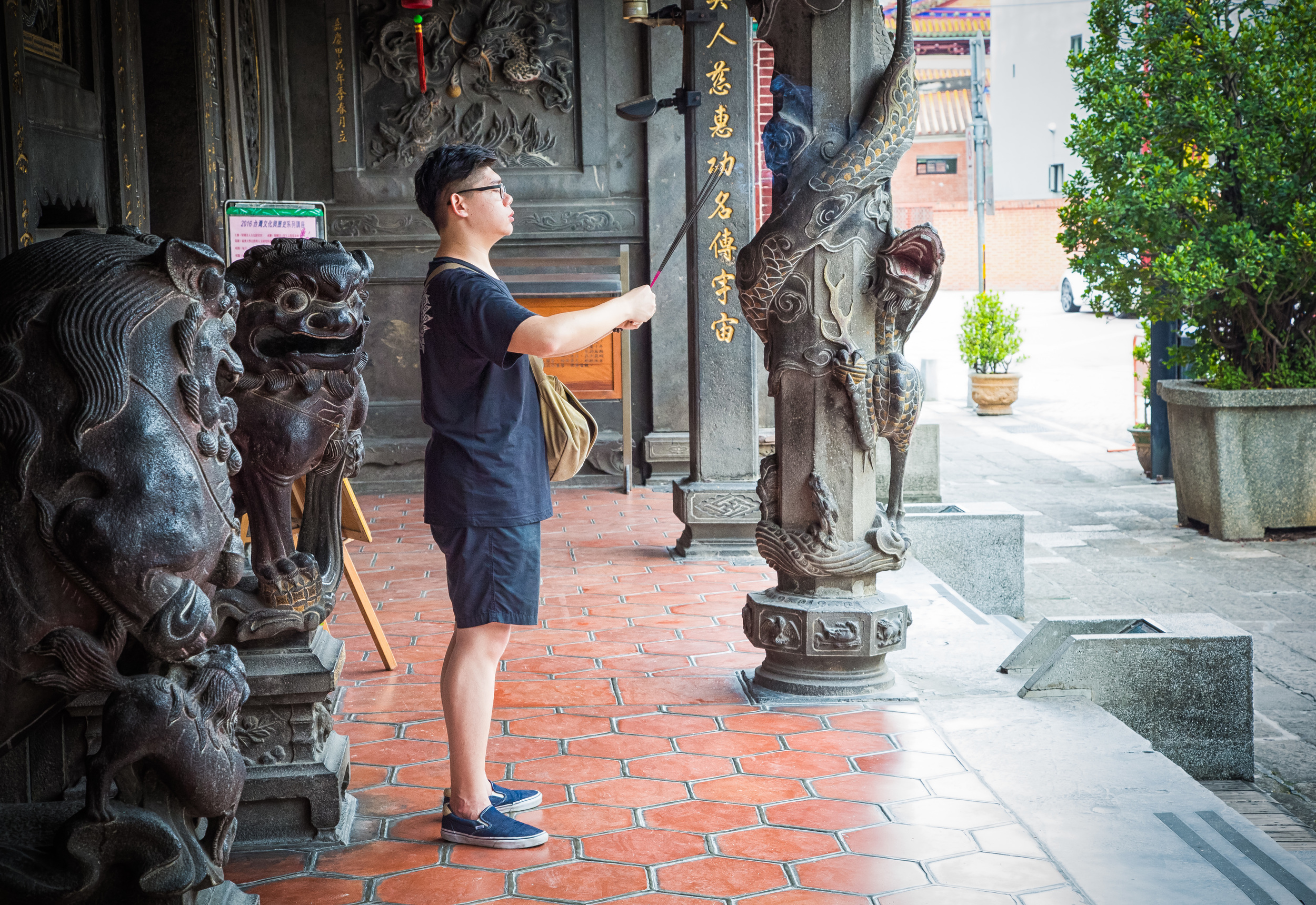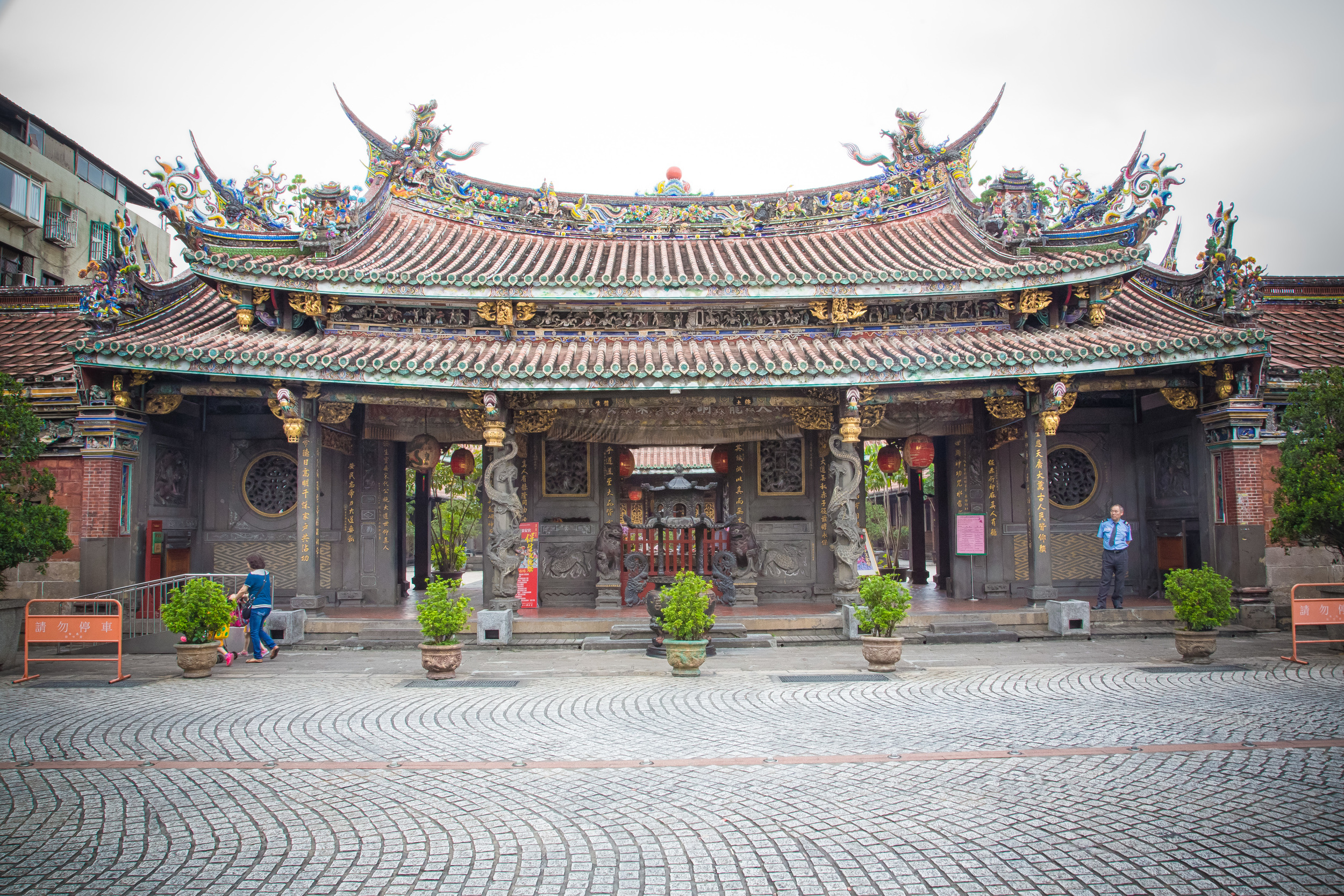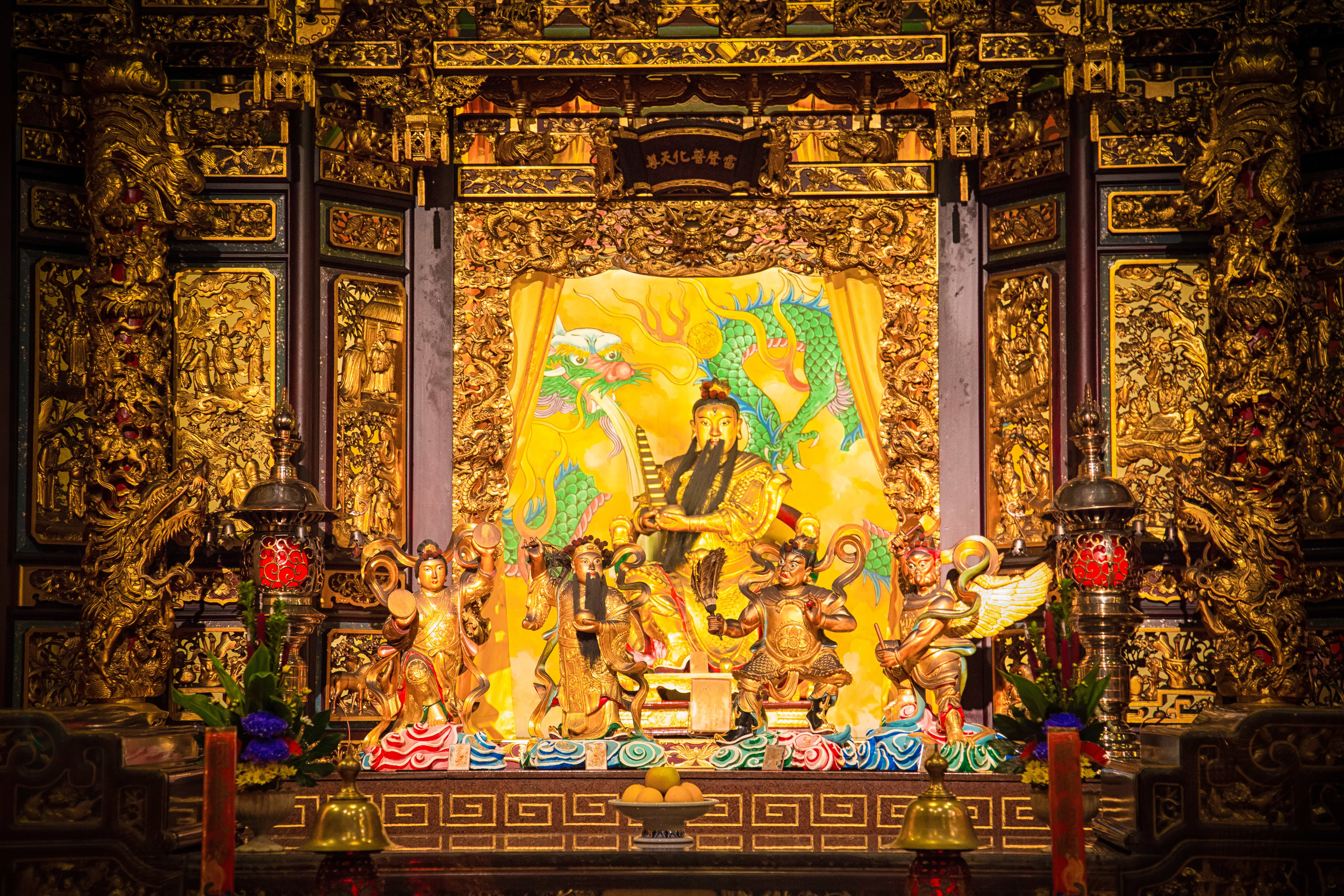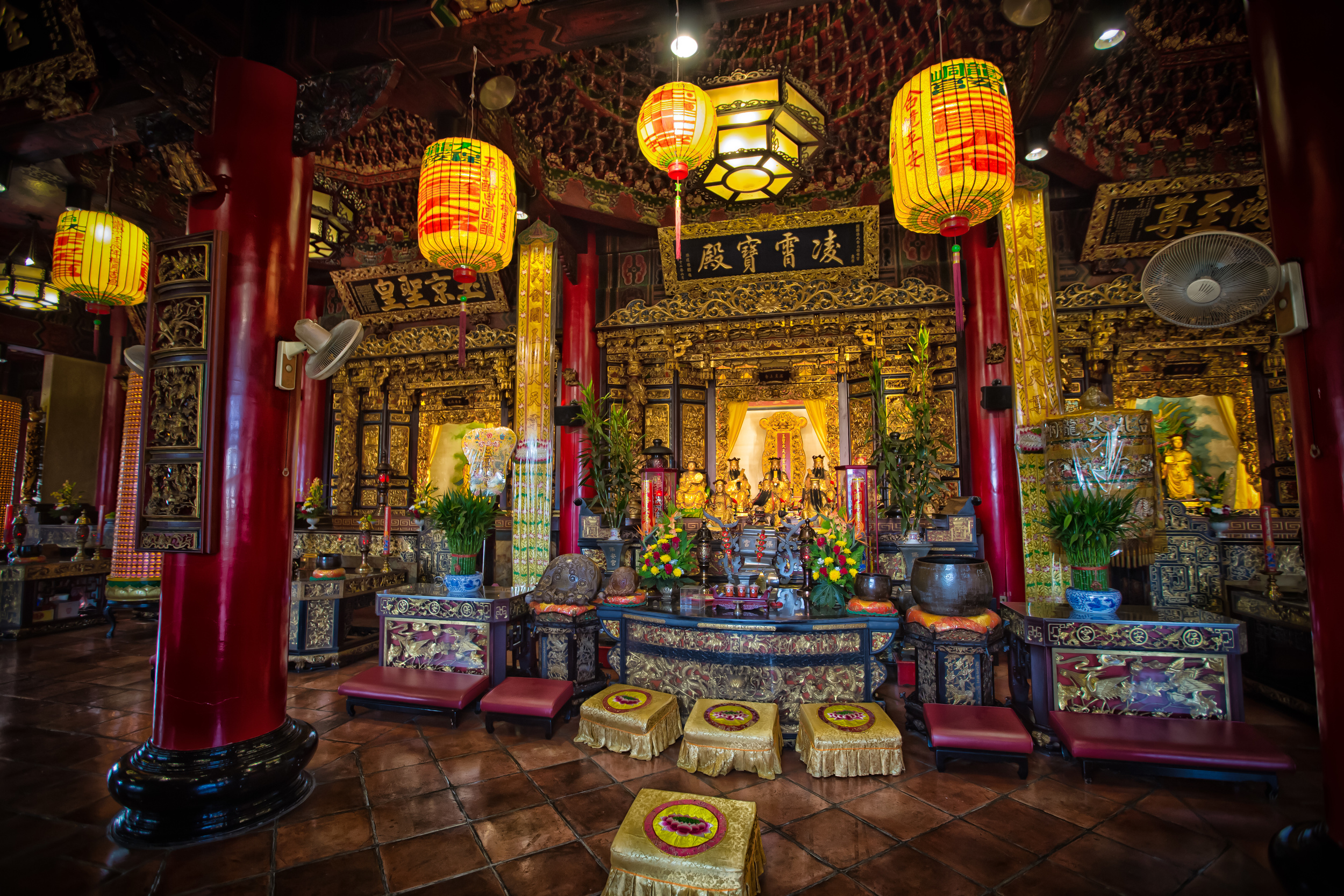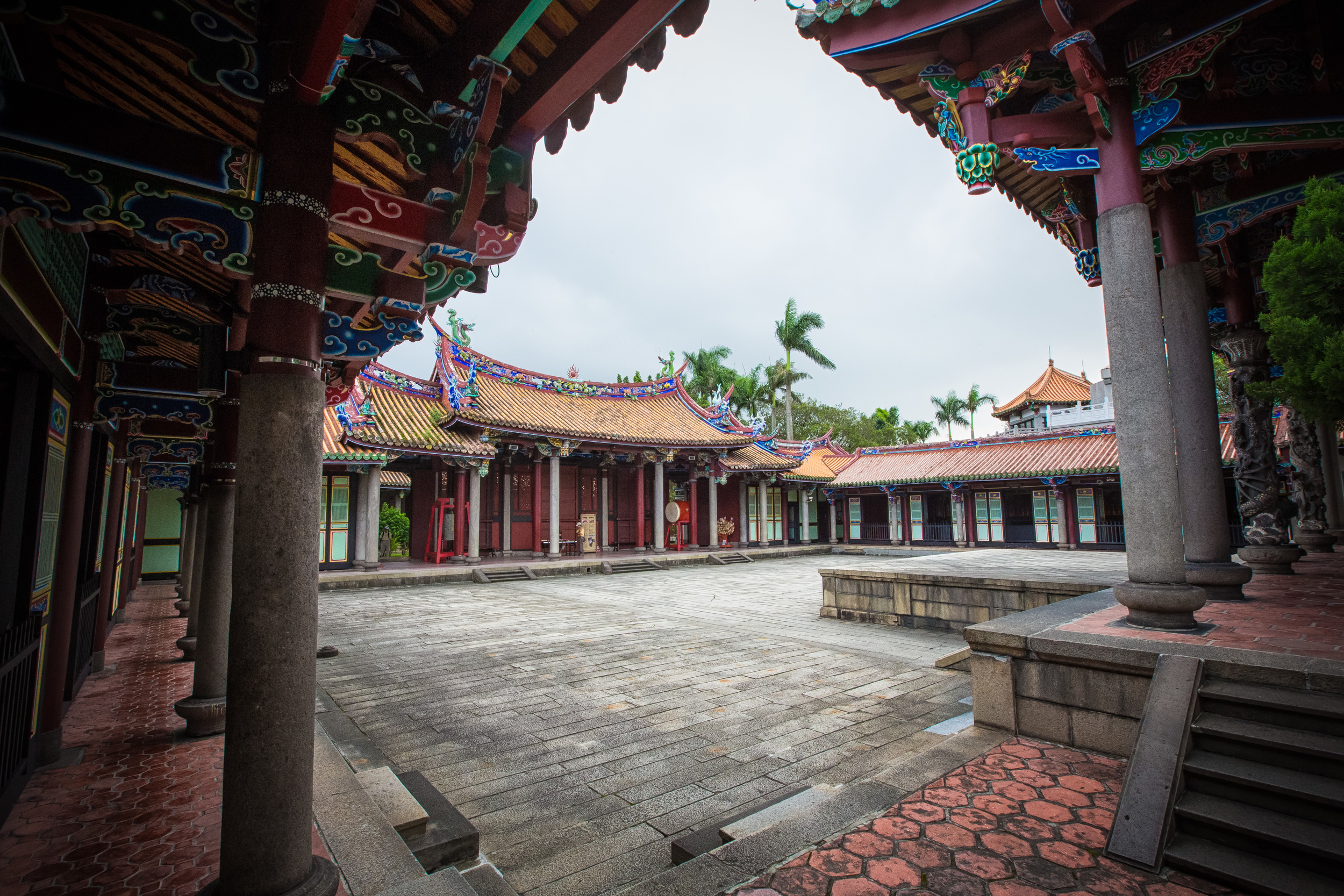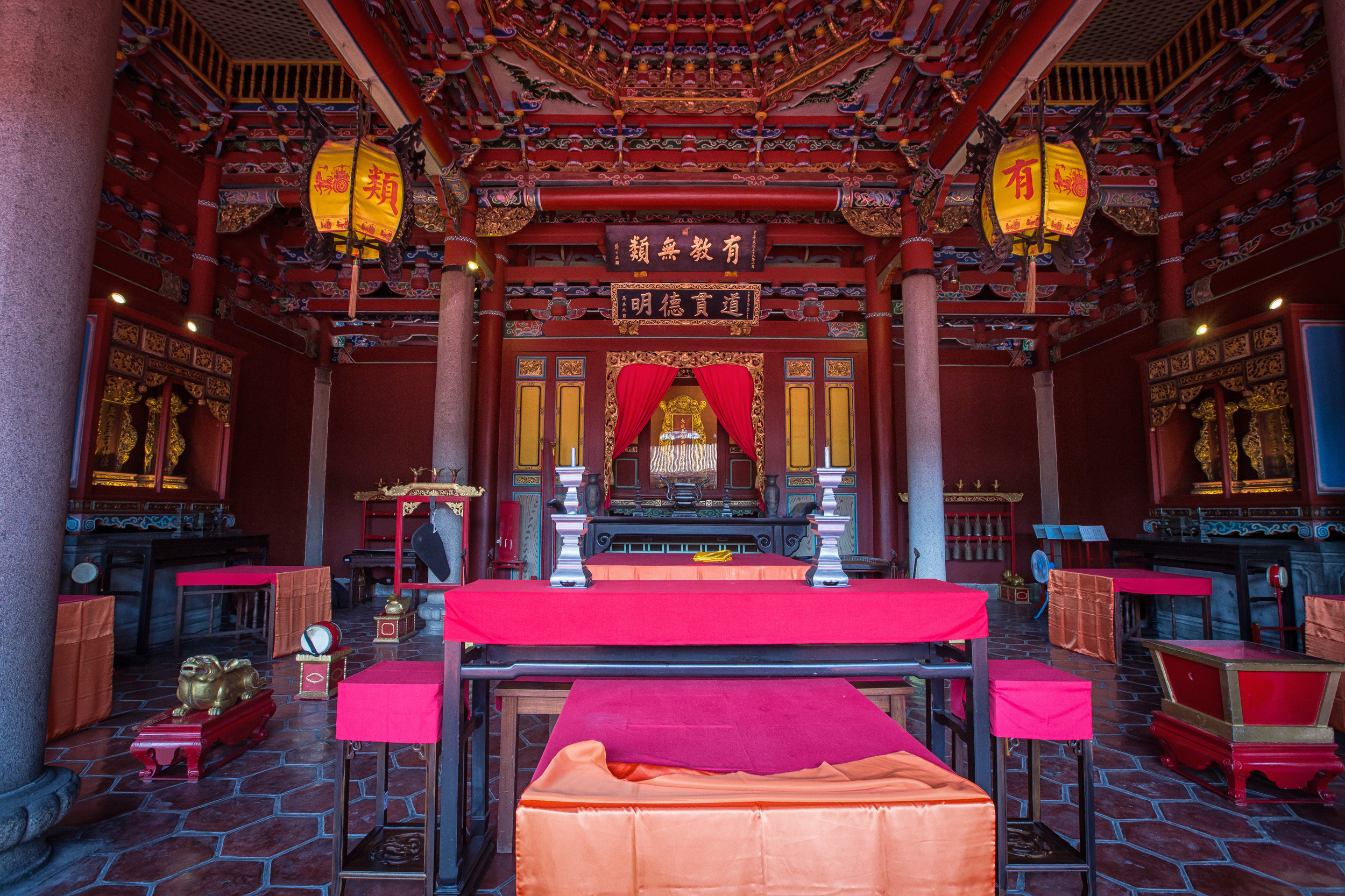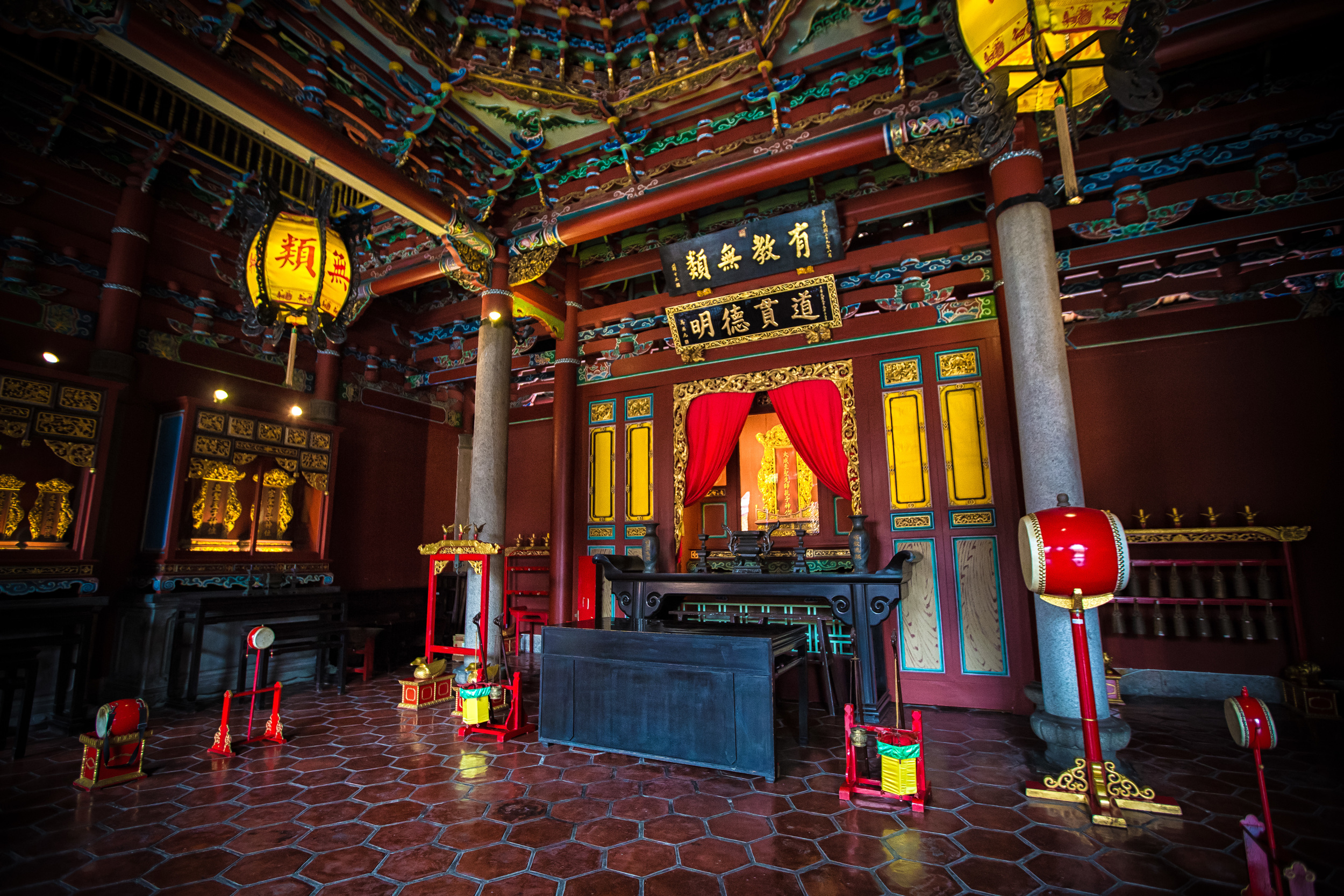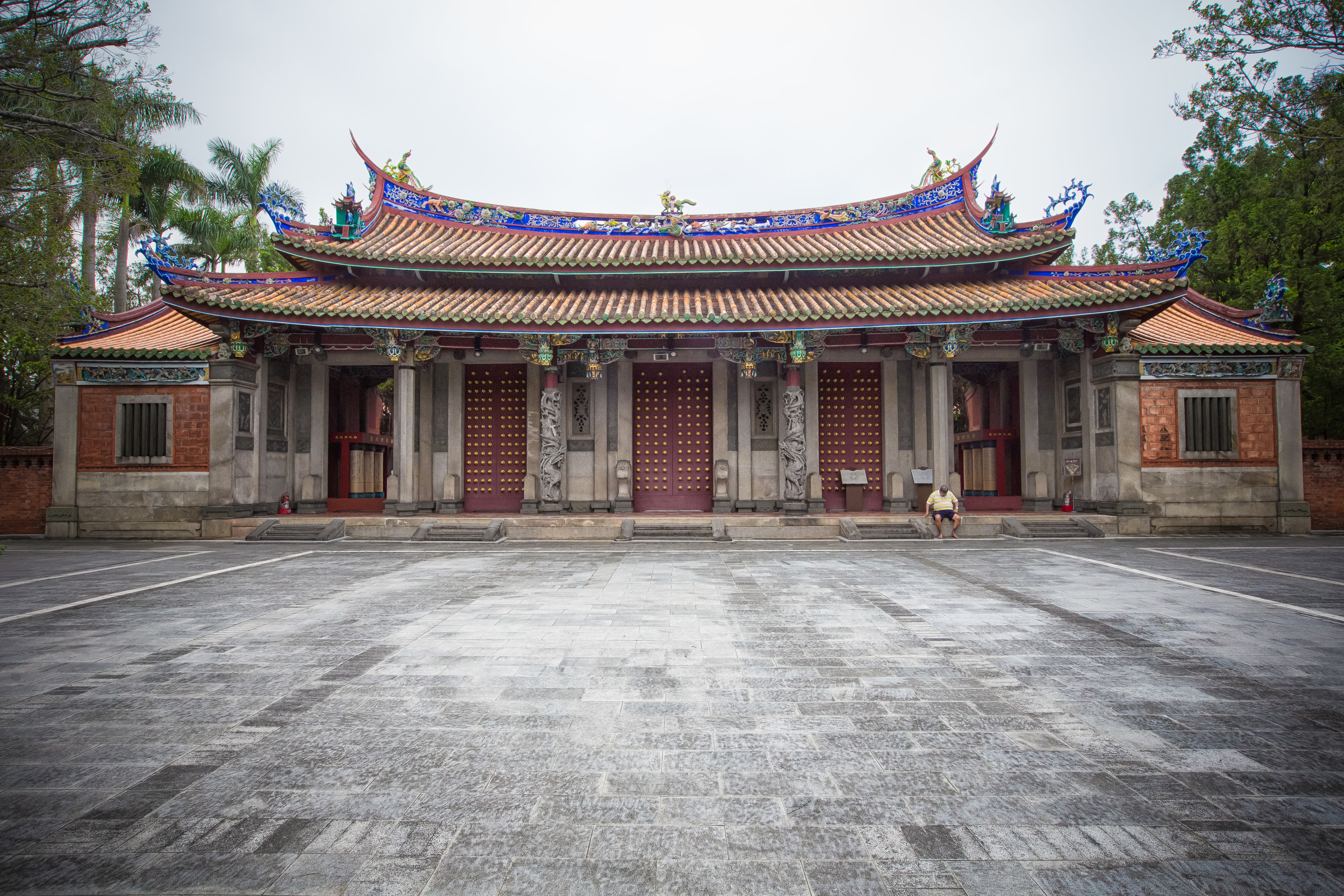When I first started writing this blog a few years back, I wasn't as organized with how I would present photos and information as I am now, nor did I really imagine that the blog would get as much attention as it has. I planned on posting photos quite often but hadn't really considered that the content would often be just as important to people visiting the blog as the photos were. To that effect I made a few posts that combined locations and didn't really provide the information that certain places actually deserved.
This was the case when I posted about Taipei's Confucius Temple (台北孔廟) as well as its neighbour Bao-An Temple (保安宮) which happen to be two of Taipei's most important places of worship and also travel destinations for tourists. My plan is to rectify that by giving each location the proper respect and making separate blog posts using both new and old photos as well as giving more detailed information.
I know a lot of people don't share my passion for temples in Taiwan and posting about them isn't as great for traffic in the short term, but I think that temples of this importance and cultural significance deserve a much better effort on my part, so here we go:
Taipei Dalongdong Bao-An Temple (大龍峒保安宮)
Next to Taipei's Confucius temple is a temple that seems like it is the polar opposite of the other - The Dalongdong Bao-An Temple or just "Bao-An Temple" is arguably one of the busiest and most beautiful folk-religion temples in Taiwan. The temple is extremely ornate and is a national treasure to the people of Taiwan having achieved the status of a level two historic monument and being recognized by the UNESCO Asia-Pacific Heritage Awards for Cultural Heritage Conservation. The temple is also highly recommended by travel publications and is listed as a "must-visit" attraction by Lonely Planet.
Bao-An Temple wins most of its accolades from its attention to detail and the beautiful art contained within the temple as well as from me for the constant display of Taiwanese lilies that make the temple smell amazing. The original builders spent a considerable amount of money contracting the best artisans in the country at the time to help decorate the temple. If you are a fan of traditional art, Bao-An temple really is an excellently preserved museum to showcase the rich cultural history of Taiwan and the immigrants who came here so long ago.
The temple is part of the "big three" temples (台北三大廟門) of Taipei which also include the Mengjia Longshan Temple (艋舺龍山寺) and Mengjia Qingshui Temple (艋舺清水巖) which are also busy tourist attractions in their own right. The three temples may not be the oldest or largest temples in Taipei but they are the most important in terms of the culture of early Hokkien immigrants as well as the role they have played over the recent centuries of Taiwanese history.
History
The history of Bao-An Temple goes back to 1742 when new immigrants to Taiwan constructed a small shrine to the Bao-Sheng Emperor (保生大帝) on the site where the current temple exists. As the population in the area grew the shrine became insufficient and plans were made to construct a much larger temple after funds were raised.
In 1804 work began to replace the existing wooden shrine with a proper full functioning temple -
The funding and construction of the temple was initially undertaken by immigrants hailing from Tong-An (同安縣) a county near Xiamen (廈門) in Fujian Province. The temple was built to 'protect those of Tong-An' (保佑同安) and is why it was named "Bao-An Temple" (保安宮) which if you think about it is a clever run on words with a double meaning paying homage to the Bao-Sheng Emperor for which the temple is dedicated as well as "protecting" (保佑) the people of Tong-An who would have had a tough life in the early days of Taiwan's development.
The construction of the temple was instrumental in the early development of the Dalongdong (大龍峒) area of Taipei and when initial work on the temple was completed in 1830 extra materials were sold at a discounted price to people in the area to build up their residences and businesses. Today if you walk along the cobblestone road near the temple you can still see some of these buildings (they have since been reconstructed with stronger material) which are uniform in nature and would have housed the earliest merchants in the area.
Similar to the experience of the neighbouring Confucius Temple, the temple experienced a period of neglect during the initial years of the Japanese Colonial Period as the Imperial army used the temple for various purposes including that of a trade office and a language school. When the situation in Taipei settled down with the new colonial power local people put together funds to repair and renovate the temple as well as adding additional shrines on the east and west sides of the temple.
The Second World War provided for yet another difficult period for the temple as Taipei became a target of the allied bombing campaign against the Japanese and left parts of the city in ruins. The Japanese were ultimately forced to surrender Taiwan to the Republic of China (中華民國) which would then become embroiled in the Chinese Civil War shortly thereafter.
With the loss of the Civil War to the Communist Party under Mao Zedong (毛澤東), the Chinese Nationalist Party (中國國民黨) under the leadership of former president Chiang Kai Shek (蔣介石) retreated to Taiwan with millions of people loyal to the ROC. This presented a problem for the island as there was insufficient housing for the new arrivals. Higher class members of Chinese society as well as members of the armed forced were provided with housing but people of lower social status were forced to fend for themselves.
Some of those refugees found themselves becoming squatters within large structures throughout the country. Bao-An temple which was already in a state of disrepair from the war suddenly became "home" to over 130 different families of refugees.
In 1966 when the housing situation had improved the squatters were evicted from the temple after almost 20 years and rehoused elsewhere. Their illegal structures were then torn down and work began on the reconstruction of the temple which lasted until 1974 when a fund shortage forced the repairs to be suspended.
Reconstruction began yet again in 1988 and was completed in 1991 giving us the beautiful 3000 square meter Bao-An Temple that we see today that includes the main temple, a rear hall, shrines and offices on the east and west sides as well as a several storey building that houses shrines and a massive library dedicated to religious studies and the history of the area.
In 2003, a few years after its completion the temple was recognized by UNESCO Asia-Pacific Heritage Awards for Cultural Heritage Conservation (聯合國教科文組織亞太區文物古蹟保護獎), a well deserved award for the 270 year old temple which has had its fair share of ups and downs over the past three centuries of Taiwan's incredible history.
Design
The temple has a very traditional design and was constructed according to Feng Shui (風水) with the temple seated north and facing in a southward direction. The architecture of the temple is well known throughout Taiwan for its grand design and it's beautiful stone carvings on the pillars both outside and inside the temple.
The stone carvings and lions on the front wall date back to 1805 and while they have received some restoration work over the years they are still in their original state while there are several other pillars throughout the temple with dragons, flowers and birds on them. When visiting the temple it is important to take your time to enjoy the craftsmanship in the stonework which surrounds the temple.
This type of art is common in Taiwanese temples but if you spend some time to check it out you'll notice that a lot of the stone pillars and murals feature more than just dragons. The pillars with birds and flowers on them are a rare sight at temples in Taiwan and these designs set the temple apart in terms of the artwork.
Bao-Sheng Da Di (保生大帝)
Bao-An Temple is dedicated to a Taoist folk religion deity known as the Bao-Sheng Emperor. The deity is an important figure in Taoism but also a folk hero to the Hokkien people (閩南) who make up a large percentage of Taiwan's population. In Taoism, gods have specific functions and people pray to them for guidance and of course good luck. The Bao-Sheng Emperor is the god that people pray to for good health for themselves and their family making him an important figure within Taoism with over three hundred temples or shrines dedicated to him in Taiwan alone.
Lord Bao-Sheng was known in life as Wu Tao (吳本) and lived near Xiamen (廈門) in Fujian (福建) during the Song Dynasty (宋朝) in the year 979. He was well-known for his knowledge of Traditional Medicine as well as Taoism and is credited with performing several medical miracles as well as his selfless acts in assisting people in his profession as a physician. It is said that after achieving enlightenment Wu Tao decided that rather than entering nirvana that he preferred to stay in the mortal world to assist people in overcoming disease and sickness. For this dedication to alleviating the suffering of others he became deified as a Taoist deity and received the new name "Lord Bao-Sheng" (保生大帝) which is loosely translated as the "Protector of Life".
There are a lot of fantastical stories that are told of these historical individuals who become deified in Taoism but in actuality Wu Tao died in 1079 and his deified status became official much later in the Ming Dynasty (明朝) when the emperor conferred upon him the extremely long title: “Imperial Inspector at Heavenly Gate, Miracle Doctor of Compassion Relief, Great Taoist Immortal, and the Long-lived, Unbounded, Life Protection Emperor"(恩主昊天金闕御史慈濟醫靈妙道真君萬壽無極保生大帝) which was thankfully shortened later on!
Worship of Bao-Sheng became popular in the Ming Dynasty and Taoists would visit temples dedicated to the deity to pray for good health and advice on how to cure certain ailments. This practice has continued to this day (mostly in Fujian and Taiwan). If you visit a traditional doctor in Taiwan you are very likely to see an image of Bao Sheng somewhere in the office as he has also became a patron of sorts to people who continue to practice TCM. With the advent of modern medicine however I would hope that people would instead visit a doctor rather than a temple to find the cures for their ailments.
Today one of the most popular temple events on the yearly calendar in Taipei is the celebration of Bao Sheng's birthday known in Taiwan as the Bao-Sheng Cultural Festival (保生文化聚) which is celebrated with spectacular parades, performances and rituals which start on the 15th day of the third lunar month (April or June) and usually last for an entire month.
Shrines in the Temple
This is the second time I've spent a considerable amount of time translating the entire list of gods found with in a large Taoist temple. I don't do this for every temple that I blog about and truthfully the last time I did it for the Songshan Ciyou temple I spent hours working on the proper translation for all the gods and it was copied word for word by another site without any credit whatsoever. Considering that that this is the ONLY resource on the web for this information in English I don't mind if the info is used, but at least be respectful and give credit if you're going to copy it:
Main Hall (正殿): Bao Sheng Emperor (保生大帝), 36 generals (三十六官將)
Eastern Hall (東邊): Matsu (天上聖母), Earth God (福德正神)
Western Hall (西邊): Goddess of Childbirth (註生娘娘) 12 nursing goddesses (十二位婆姐)
Rear Hall (後殿):Bao Sheng Emperor (保生大帝)、Emperor Xiantian (玄天上帝), Confucius (至聖先師), Emperor Shennong (神農大帝), Guan Yu (關聖帝君)、Kaishan Spirit Tablets (開山先祖)
Rear Building Third Floor (大樓三樓): Trikaya Buddhas (三寶佛), Mañjuśrī (文殊菩薩), Samantabhadra (普賢菩薩), Guanyin (觀音菩薩), Sudhanakumâra (善財龍女), Skanda (韋馱菩薩), Samghārāma (伽藍菩薩)
Rear Building Fourth Floor (大樓四樓):
Quick note: The upper-most floor of large Taoist temples are typically dedicated to more celestial-level gods within Taoism. You'll usually find the Jade emperor and members of his court on that level. The problem with translation of the names of these gods is that they sound strange if you translate them directly. The following gods are mostly all found within the stars and are constellations and/or are said to control fate and other stuff that is hard for humans to understand.
Left side: The Star Lord Family: Mother Goddess of the Big Dipper (斗姥元君) Lord of the Eastern Dipper (東斗星君), Lord of the Western Dipper (西斗星君), Lord of the Little Dipper (南斗星君), Lord of the Northern Dipper (北斗星君)、Lord of the Central Dipper (中斗星君), Donghua Emperor (東華帝君).
Center: The Jade Emperor (玉皇上帝), Lord of the Sun (太陽星君), Emperors of the Three Offices - Earth, Heaven and Water (地官大帝, 天官大帝, 水官大帝), Lord of the Moon (太陰星君).
Right Side: Lü Dongbin(孚佑帝君), Guan Yu (關聖帝君), The Kitchen God (灶神), Queen Mother of the West (王母娘娘), Heavenly Lord Pu Hua (九天應元雷聲普化天尊), Thunder God (雷神), Wind God (風神), Rain God (雨師) Maiden of Lightning (電母).
When you come to Taiwan people will always recommend that you visit the National Palace Museum to see important historical artifacts from China sitting in glass cases. I say why bother? Why come to Taiwan to see stuff that doesn't really have anything to do with the people here? Why not visit a living museum where there is no entrance fee, no pushy tourists and no long lines?
Taiwanese culture is a vibrant one and it is on display each and everyday at Bao-An temple - The temple is filled with beautiful art and the preservation of the original architecture is about as good as it gets for a 275 year old building with such a storied history. As one of Taipei's big three temples and the recipient of prestigious awards for cultural heritage it should be on the top of any travellers lists of places to visit when you come to Taiwan. Don't be afraid to just walk in and enjoy the sights, sounds and amazing smell of the thousands of lilies that are on display everyday!
Gallery / Flickr (High Res Photos)
